

Traveling Cross Country with a Dog: Great Travel Hacks + Guide
Disclosure: This article contains affiliate links and is a member of Amazon Services LLC Associates Program, meaning when you make a purchase, I earn a small commission. Affiliate links cost you nothing to use, and help keep my content free. It’s a win-win for us both! For more info, see the Privacy Policy
Which dog is YOUR best travel buddy?
Check out my FREE travel quiz to discover the best travel companions!
Have you been wondering about the best ways to take a cross country road trip with your dog?
We have driven over 100,000 miles on the road with our dogs. We have crossed borders, traveled top to bottom, and coast to coast within the United States. Our dogs have been along (lucky us!) for the journey. We have also done this in a car that only has space for us, our dogs, and the stuff we need for the trip. It doesn’t have to be anything fancy for you to have a great trip, but there are a few things that make a huge difference!
Road trips and cross country traveling can take many forms and last from days to months, depending on how you are traveling. I can’t cover it all, but I can at least cover the essentials. Since most people will be driving and using the vehicle that they already have, that will be what we will assume here. (Though I do have a very strong vehicle recommendation if you are exploring options – see the section for tips on vehicles ).
This guide weaves together our own experience as well as some of the professional recommendations that the AKC and the Center for Pet Safety provide for traveling with dogs. It is a huge topic, but I really wanted to focus on the things that are in your control and can make a difference between a chaotic trip and a smooth one.
My goal is for this to be useful whether this is your first cross country tip, or you just want some tips and tools to make your next trip go better than the last. Even for veterans there are some tools (see our packing list and food calculator ) that can help plan your cross country trip.
I hope this helps you on towards a great cross country road trip with your dog!

First, if in the back of your mind you are wondering “is it really so complicated you have to write a whole article?” then you are in the right place. As you will see, the actual “how to” is pretty straightforward. However, it is a lot of distance to cover, a lot of things can happen, so I want you to make the best of this trip. If you are like me, you want to know how to do this safely, comfortably, and efficiently.
A quick guide for a cross country road trip with a dog
For the basic parts of a road trip it helps to look at the simplest scenario: a solo cross country road trip where you are just trying to get coast to coast as quickly and as safely possible. Whether it is for fun or for necessity (like moving to a new place or an unexpected life event), a cross country road trip requires both you and precious pup to drive…and drive…and drive all the way across the map.
To achieve this you:
1) Plan your route 2) Drive 3) Make pits stops for food, water, bathroom, car fuel 4) Find and stay in accommodations that allow pets
Road Trip Essentials
So now with the power of the internet and some common sense, here is a quick guide to traveling cross country with a dog:
Plan and Pack for Your Trip
- Use google maps or Wayze to plan your route
- Break the trip up into daily segments based on how long you can drive without getting tired (be conservative, this is a marathon not a sprint)
- Use the pet friendly filter on Expedia.com or Booking.com to find and book accommodations that allow dogs*
- Pack the basic dog necessities ( food , water, leash, poop bags, bedding, medicines)
- Pack your own travel necessities (clothes, toiletries, etc)
- Use a traveling harness or crate to keep your dog safe**
Hit the Road
- Load up the car, get your dog comfy and secure
- Drive (so much driving!)
- Take breaks to keep you and your dog hydrated, fed, alert, relaxed and comfortable. Truck/travel are great pit stops usually with shade and good amenities
- Use shade, climate control, Tesla “dog mode”, etc to keep your dog safe when you have to go inside without them (be very careful!)
- Check in to your accommodation. Sleep. Then begin again. * Accommodation is a huge topic all of its own but on trips where you spend one night in each place a hotel is usually your best bet for cost and convenience ** We will cover the benefits of safety restraints in more detail, but is also good to know that there are a growing number of states that by law require dogs to be restrained in your vehicle .
Yes. That’s it! Obviously, for your own trip this list might not be complete. If you are camping, or biking, or touring as a wandering minstrel and circus show … you’ll know best the special things and activities you require for your own adventure.
What should you pack for such a long trip?
If you have completed any kind of road trip with your dog already, I have good news! You probably have the essentials. If you want to double check that you have everything you need for a road trip, we put together a checklist for you. Our packing list is pretty comprehensive. Rather than exploding this post with long list, we put that at the end, and you can jump to that here if you want.
The checklist is also organized as a system, so the most frequent items are right at hand for you and your doggo, while the important but less used items are off out of the way.
Do’s and Don’ts for Traveling in a Car with a Dog
Before we get into our great Travel Hacks (I think they are great anyway), let’s touch on some dos and dont’s to be aware of. Our quick guide above obviously does not cover all of the “what ifs” and the ins and outs of traveling across the country. That would require a whole book, or several. As a start, here is a condensed list of important things to consider for the road ahead.
- Get Records from Your Vet : Ensure vaccinations and medications are up-to-date. Keep your records with you! You can’t plan for everything and there are many dog services (doggy daycare, grooming, etc) that require the records
- Consult a Mechanic : Is your car ready and are your tires in good health?
- Create a Safe Space : A divider, favorite blanket or dog bed can help your dog relax in the car
- Use a Safety Restraint : Our recommendation is a crash test-certified harnesses.
- Have FUN! : Get some great audio books, podcasts and playlists for yourself. Bring toys and chews for the doggo. Take breaks for walks, site seeing, play games!
- Book Longer Stays in Advance : Good pet-friendly Airbnb and Vacation Rentals go fast in popular destinations. Book a few months ahead to beat the crowds
- Get Real Time data with Navigation Apps: Wayze, google maps, etc
- Prepare for Weather : Layers to manage temperatures, umbrellas/raincoats for rain
- Pack a First Aid Kit : Like with the weather, best to be prepared
- Always have a Jug of Water: Stay hydrated, keep it full especially in summer.
- Use Belly Bands or Diapers for Seniors or Puppies: the change and stress of a trip can cause a dog to lose some of the control they normally have. Disposable diapers can help keep everything clean and keep things moving.
DON’T
- Don’t Drive Drowsy, Angry or Distracted : It is as dangerous as driving under the influence. Pull over, take a break. Recharge. Take a nap if you need to.
- Don’t Ignore Signs of Stress : Be aware of your dog’s comfort and health. Take a break and check your dog out if they are showing signs of distress.
- Don’t Get Nailed by Crazy Pet Fees or Policies : Read the fine print, call to confirm, look through all of the house rules and policy sections on Airbnb, Vrbo, etc. The pet fee amount on 3rd party booking sites is often missing or incorrect. You may need to check with the hotel directly.

Secure your dog with a Safety Harness or Crate
This final DO warrants its own section. Both the AKC and the Center for Pet Safety are very clear that the best thing you can do to keep your pet safe is to secure them in a crash tested safety restraint such as a harness or crate. Since you will be spending a lot of time driving, it is one of the best things to minimize movement and distraction for you and your dog.
This can be a challenging topic, but we have a great Travel Hack that has worked really well for us (see Travel Hack #1 ).
TIP : Here is a surprising fact that has been true for all of our dogs. Safety restraints help our dogs settle into “driving mode “. If you help them get used to the setup, it becomes a familiar and even calming routine for them. We have terriers, folks, so if a terrier can get on board, yours can too.
What we have found most surprising is that when they are NOT in their harness or crate, they are more agitated, stressed and active. So bottom line in our car: we wear seatbelts, they wear seatbelts or go in a crate …it is just a part of safe and smooth driving.
3 Great Travel Hacks for a Road Trip With a Dog
Next let’s move next into the heart of this guide, and what I hope you’re really here for: how to maximize comfort, ease and safety.
There is no way around it, you are looking down the road at some serious amounts of travel and driving time. It can be a fun adventure. It can also be frustrating, exhausting and challenging if we’re not ready for it. So now let’s focus on how to make this trip safe and comfortable for everyone involved. In our experience, there is a lot of advice out there, lots of to do lists, but out of all of that for us there are a short list of travel hacks that make driving with a dog a lot easier, more enjoyable and much safer. Here are our 3 travel hacks that have really made a difference for us and we hope will for you too.
Travel Hack #1: Our Favorite Crash Tested Restraint
Since crates can take up more room in the back of the car, our first big tip is to use a crash tested safety harness .

We found that SleepyPod Clickit harness is the best for freedom of movement and flexibility while also being secure. We are able to use it as a harness both in the car and for walks. Sam is fine wearing it for long hikes. So it is both comfortable and very solidly constructed. This harness has sizes that fit larger dogs, so even labs can wear it.

For smaller dogs like Denver, a harness will not protect them. We found that the Sleepypod Air is also great. It is comfortable and is built to be secured by the seatbelt. Because it is made to sit in the car seat, we can move Denver in and out of it easily.
We don’t have personal experience with crates that get tied down in the back of a car. However, for larger dogs or to free up your backseat for other passengers, you may need a crate. The Center for Pet Safety tested and approved Cabela ‘s, Gunner , Lucky Duck , and Rock Creek Crates

While none of these products are cheap, they are built with safety first. The reason why we like the safety harness is because it is one of the more affordable and flexible options.
There’s a great Facebook group for learning how to set up your crate in your vehicle.
Tip : Crates have different purposes and are not interchangeable. Wire house crates and plastic airline crates will not hold up to the impact of a crash
So to sum up here are some of the many reasons to use safety restraints. The biggest is to protect your most precious cargo. They deserve it!
- Safety : Protects your pup and passengers in case of an accident.
- Traffic Laws : Some states require safety restraints!
- Distraction Prevention : Keeps the dog from distracting the driver.
- Comfort : Ensures a more comfortable ride for your canine traveler.
- Stress Reduction : Lessens anxiety for both you and your pet.
- Emergency Preparedness : Easier to manage in unexpected situations.
- Vehicle Cleanliness : Keeps the dog hair, paw prints, etc in one consistent spot
Now do some dogs and their humans have a tough time with this equipment? YES , and yet dogs can learn to make it work. Traveling is a set of skills that almost every dog can master (more on this later).
Travel Hack #2: The Best Pit Stops for Traveling Solo with a Dog
The most efficient routes across the country are also major trucking routes. Gas stations that are built for truckers also make for great places to to take a break with your dog.
Recommended gas stations
TA Travel and Pilot are all over the United States Wawa and Sheetz are popular in many eastern states (and they have often superchargers) Buc-ees are great if you are down South
Our dogs may have seen Niagara Falls and the Golden Gate Bridge , but some of their favorite things have been grass patches at rest stops. I guess there’s a lot of “pee-mail”.
Dog-friendly retail stores are a lifesaver
There is a big problem when traveling solo, since travel stops serve food, you can’t take your dog inside . When the weather is extreme or when you are worried about the safety and security of your dog, retail stores are a great alternative!
Petco, Petsmart, Home Depot , Lowes , and TJ Maxx are just a few of the places that you can usually take your pet. They are large enough so that you can stretch your legs walking around. Home Depot and Lowes typically have big spacious bathrooms right near the entrance.
Note that many of these retailers have pet policies on a store by store basis, but we generally have not had any trouble just waltzing on in (thank you big box retailers!)
Tips for Leaving Your Dog in the Car (Travel Hack #3)
At some point, you will need to leave your dog unattended in the vehicle. It is almost unavoidable, especially if you are traveling solo. There are a few things people do that can really help when you need to leave your dog in the car to use the bathroom, grab something to eat, etc.
The method that works best for you will depend on the type of car you have.
- Remote Start : turn on climate controls while outside of the vehicle (newer cars)
- Physical Key : leave the fob in the car to keep it running, take the physical key out and lock it
- Tesla Dog Mode (This is a life saver. Never heard of it? Well, read on…)
- 3rd party vehicle cooling systems : these are especially popular with sprinter vans and RVs, but you can use them in a regular car too.
- Park in the shade: even on cool days, direct sun can make your car crazy hot
Please be very careful , even with automatic climate controls like Dog Mode, there are some risks to leaving your dog alone in the car especially in extreme heat.
Tips for what to look for in a vehicle
Most folks will just be using the vehicle that they have for their road trip. It is such a big ticket item and car rental prices can be stiff, so most of the time you just go with what you have. However, if you find yourself needing to rent a vehicle or actually are planning on getting a car that is great for traveling with a dog, then it is worth spending a little time on the topic. It is the MAIN piece of gear for your road trip.
Obviously we will only touch the surface here. Cars, trucks, vans all are such a huge topic that depend heavily on budget, style of travel and the size of your dogs. But I have been surprised at how little the “Top Vehicles for Dogs” articles focus on the things that are actually useful for traveling with a dog.
So here are our major features to pay attention to:
- Cargo Space : very important for dogs traveling in crates. You need generous space AND the seats need to lie completely flat
- Remote Start : most new cars will have this, helps keep your dog safe in a pinch
- Automatic Doors : easier to get in and out with your pup and all the stuff
- Configurable Space : seats that easily fold, seats that lie flat (for crates). Sometimes you need to have space for your dog(s), sometimes you need it for people.
- Easy to Clean : dog hair, muddy paws, you know the drill. Can the materials handle it?
What vehicle do we use? Tesla Model Y
EVs are still new enough it is worth spending a little time on why we chose a Tesla. What many people don’t realize is that the newer models of Tesla are Tesla are getting more affordable, and that they make amazing road trip vehicles, especially when traveling with a dog.
Great Road Trip Features (and one drawback) of a Tesla
Dog Mode: this is amazing! It allows you to set the climate of the car to stay the same while you are away. Your dogs can stay comfy in their car while you grab a bite to eat or pop into a store. Using the Tesla App you can monitor the car to make sure the climate is staying on.
Autopilot : driver assist technology that comes standard on all Tesla cars and is a huge help with driving, which you have to do for hours and hours and hours on end. Tesla’s Autopilot capability is much better than any other car maker out there
Safety Features: Tesla is also the safest vehicle on the road as independently tested by a bunch of different organizations. It has both active and passive safety features to protect you and your pups.
The main drawback – Charging . Our experience with EV Charging is mixed. Charging can be a hassle and in the middle states, the charging infrastructure is sparse. On the flip side more and more hotels are adding charging stations. So forget the gas station, if your hotel has EV charging you can be all fueled up and ready to go in the morning. So there are both pluses and minuses. Interested to learn more? Take one for a test drive ! You can both get some perks and send some thanks my way by using my referral code when you do a test drive or if you go all the way and get one for yourself! Use this link: https://www.tesla.com/referral/chris82996

Traveling is a skill and your dog can learn it (Bonus Tip)
One last tip is a special combo that can really help your dog become a great traveler on the road and in life in general. A safe space helps your dog keep something familiar through all the changes. A learning mindset helps both you and your dog adjust to all these changes.
A safe space might simply be a favorite blanket and/or toy. The ideal safe space can easily be moved from the car to the room where you are staying. Your dog’s safe space can also be very useful when working on travel skills that help your pup become a happy camper. The two main skills that will really help your pup make the journey are riding in the car and crate training . Your dog’s safe space can bring comfort and confidence to your dog as they take on these skills. It is a virtuous cycle.
Some dogs will naturally be good travelers, but many dogs have to learn how to travel. Others will have a negative experience and traveling with them can become a nightmare. In most cases this can be avoided.
Car Training Skills to Practice
If this is your first big road trip with your dog, there is a lot you can do ahead of time to get them ready. This section is primarily for those making their first big trip with their dog. But even for folks with few trips under your belt, let’s do a quick sanity check. Here are skills that a well rounded dog will have that really help with traveling:
- Can they settle themselves down and sleep in the car when driving or stopped?
- Can they go for long stretches of driving without getting restless and crazy?
- Can you leave them to stay calm in an unfamiliar place (like a crate in a hotel room)?
- Are they fine to pee and poo on different surfaces and under a variety of conditions?
- Do they eat and drink easily in an unfamiliar place?
Why is this such a big deal? Because if your dog is miserable, than you will also probably be miserable and have fewer options when traveling. The more your dog knows, the more freedoms you both have to enjoy the experience. Since our goal is for and your dog to be comfortable and safe, teaching your dog traveling skills will really help.
Riding in the car : I know it sounds a little silly that riding in the car is a skill, but think about it. It can be bumpy, noisy, nauseating and scary to a dog. Wearing a safety harness or traveling in a crate will also be something your furry friend will need to get used to.
Crate training : this is a lifelong skill that will help your pup deal with separation, learn to calm themselves down, get used to relax in confined spaces, and to be patient. It is a true game changer.
While it is too long a subject to go through here, our post about dogs that refuse to get in the car provides more of a deep dive into some of the issues dogs face while traveling. You can also learn more about what panting in the car might mean for your dog. Most of these skills can fit naturally into your day. Like with anything useful it just takes a small adjustment but can bring a big payoff in the end.

Road Trip Packing List for Your Dog
We organize our gear into three categories. 1) things we use all the time, so it just stays right near the dog in a door cubby or footwell 2) things we use daily/nightly, we try to fit those all in one “overnight bag” 3) gear that is useful for longer stays, or used less often If you want to see a brief talk through of our stuff, here’s a video I threw together (plus Denver cameo)

What to pack: what we need all the time
- Water bottle
- Travel Harness /Crate
- Treats and Snacks
- Belly Band / Diapers (for Sam our senior dog)
What to pack: the daily/overnight bag
- Blankets (Pawtect Waterproof is great!) and/or Dog Bed
- Dog Bowls for Water Food
- Towels/Rags for spills and paws
- Stain Remover for spills and accidents
- Collapsible Dog Crate – this one pops open like a tent (fast setup/teardown)
- Toothbrush and Toothpaste
What to pack: important, but bulky or less frequent
- Collapsible Wire Dog Pen : outdoor use, for yards without fences, parks, etc
- Mr Peanuts Dog Packpack : for public transport or carrying dog on long outings
- Collapsible Soft Dog Pen : used inside as a sleeping area
- Grooming Kit
- Bulky Dog Bed
- Refills on frequent items (poop bags, snacks, wipes, etc)
How much dog food do I need for my road trip? Dog Food Calculator

Dog Food Calculator for Your Trip
Wrapping up: how to travel cross country with a dog.
Planning a successful cross-country road trip with your dog can be intimidating, but with a little preparation and smart packing, you can be on your way. We hope that this guide helps you get ready for the road ahead.
We’ve learned a lot through research and planning, but most experience just came from hitting the road and learning from there. So I hope you have what you need for an enjoyable and memorable adventure across the country with your faithful companion.
Resource Guide for Travel with a Dog
🧳 What’s the best carrier for my dog when traveling?
You need different carriers for different types of travel
This is my favorite carrier for a small dog – Sleepypod Air
This is my favorite car harness for medium-large dogs – Sleepypod Clickit
This is the best for a large dog on a plane – Skymate Kennel
This is my favorite backpack for a small-medium sized dog – Mr. Penuts Tahoe
You can read more about my r eview of types of dog carriers for travel here .
🏨 What’s the best site to find cheap pet-friendly hotels?
To find cheap hotels, I recommend Expedia
Vacation Rentals are often the best option for people with pets VRBO
Stay for free or have someone watch your pet with Trusted Housesitters!
🚗 What’s the best site to rent cars?
To find cheap rental cars, I recommend Discover Cars
I have been living and traveling with dogs for over 20 years. One of the great joys in my life is to have our dogs Denver, Sam and Thandi (RIP) travel with us to as many places as possible. It can be tricky sometimes to make it all work and to create a great experience, so my goal is to help others do the same
My wife Emily and I have crossed international borders and we have experienced three different continents with a dog along for the journey. By plane, car, boat, train, bus, you name it we've done it and our dogs have come with us. Most of our time has been spent in the United States. Our home is in the California bay area, but since we love to travel we have seen a lot of the US.
We spend a lot of time on road trips. On the road, we have easily traveled more than 100,000 miles with our dogs. From coast to coast and top to bottom, state to state, we have had countless adventures and look forward to helping others do the same!
Similar Posts

How to Get a Large Dog into a Car: 5 Simple Steps
Traveling with your dog can be an exciting and rewarding experience. However, getting a large or elderly dog into a car can sometimes pose challenges. As a terrier owner, I…

Best Dog-friendly Restaurants in Palm Springs: the Top 20 Eats!
Welcome to Palm Springs, a paradise for dog lovers! This vibrant city in the heart of the Coachella Valley is known for its beautiful weather, stunning landscapes, and exciting attractions….

Deep Creek Lake: A Great Dog-Friendly Getaway at Blue Moon Rising
We arrived at dog-friendly Blue Moon Rising during the shoulder season, right after a light snowfall. The white dusting was a nice touch to turn our stay into a magical…
![cross country travel with pets Traveling Australia with a dog: The Ultimate Guide to Unleash the Fun [From a local]](https://petsaroundtheworld.org/wp-content/uploads/2023/04/Australia-beach-houses-300x216.jpg)
Traveling Australia with a dog: The Ultimate Guide to Unleash the Fun [From a local]
ARE YOU TRAVELING TO OR IN AUSTRALIA WITH YOUR DOG? Katherine loves traveling with her dogs all around Australia. We are so excited she’s willing to share her expertise and…

Flying With a Dog under the Airplane Seat: The Ultimate Guide
Have you been wondering about flying with a dog under the airplane seat? I’ve got you covered! Flying for the first time with your dog? How exciting! It can also…

Best Dog Breeds for Plane Travel and How to Choose
What Are the Best Dog Breeds for Plane Travel? If you’re a pet owner with a passion for travel, you know that not all dogs are suited for the skies….
Dog Travel Buff
11 Tips to Plan a Cross Country Road Trips with Dogs
Dogs can prove to be excellent partners on a long journey; especially driving cross country with a dog can be no less than a thrill and memorable experience. If your buddy is well trained the cross country road trips with dogs will be a fun-filled experience. It is not unknown to dog owners that their pets love and relish the outdoors. The smell of fresh nature can lure twice as much more than humans. Thus, the idea of a long road trip with a dog is not impossible to persecute.
However, making successful any cross-country road trips with dogs is not easy as it seems. There has to be preparations before the execution of the road trip, to avoid hassle on the drive. Traveling cross country with your pet can take your relationship to a new level ; taking dog on a road trip is also a way to get them on a much-needed vacation.

This post may contain affiliate links. If you buy something through one of those links, you won’t pay any extra penny, but I’ll get a small commission that encourages me to deliver more helpful content for you.
Here are some tips for cross country road trips with dog , which will make your journey more fun, memorable and relaxing.
Table of Contents
Tips for cross-country road trips with dogs, taking your dog for a check-up.
While planning any cross-country road trips with a dog, take him/her to the vet. It is necessary to know if the dog is ready or can be made to travel for a long time. Some dogs are not built to travel that long, and forcing them might cause trouble on the way. Although you can carry your dog if you have a dog carrier backpack and make sure your pup is comfortable in the carrier .
Before moving cross country with a dog, make sure with your vet that the immunizations are correctly done. It is not a wise decision to leave without vaccinations. Also, if your dog gets anxious , try to find ways with the doctor, to calm him/her down before traveling cross country with a dog.
Carrying Your Dog’s Documents
It is very important while desiring to take cross country road trips you’re your dog, that its important documents are with you. It will come in handy during any on-road emergency and can save a lot of wasted time. It is necessary while road tripping with essentials , the documents also be categorized as essential. While most people forget this point while asking how to do cross country road trip with a dog, documents are an absolute necessity while packing.
The best way to enjoy a long car ride with dog , is to make sure that all its documents are present with you digitally. There are accidents in which their physical health-related documents may get misplaced or lost. It is a safer option to have them with you in a digital space where they can be accessed anytime and anywhere.

Choosing the Correct Transportation
Car trips with dogs can easily turn sour if the accommodations are not comfortable. While asking yourself the best way to road trip with a dog , try to find a suitable vehicle. Do not in any case, choose a smaller one, because dogs need to stretch and turn for comfort. While looking for pet friendly cross country travel guide, make sure there are certain accommodations in your car for a long road trip.
Related Post : How to Travel with Your dog Internationally?
Planning the Correct Route
While planning a cross country road trip with dog , the best way to start planning is to decide on a comfortable route for you and your dog. Many routes answer most queries on how to do cross country road trip with a dog . These pointers are available for a smooth long car ride with dog. Added to the routes, are many pointers like the right places of halt and pet-friendly eating joints.
This pet friendly road trip planner gives you the correct guide for planning a cross country road trip with a dog. There are many halts where the dog can be left leash-free for quick and comfortable shredding of travel tiredness.
Read also: 10 Best Tents for Camping with Dogs
Take Dog-Friendly Treats and Toys
On a long car ride with dog, they can get restless and annoying, due to the lack of movement and stillness. While moving cross country with a dog , it becomes easier if their favorite treats and toys are present. The sense of security which is elevated by the presence of their familiar and favorite things makes the cross country road trips with dog easier. While deciding what to give a dog for a long road trip , do not forget their toys and treats.

However, it is advisable to not let them eat or chew on food at all times while driving cross country with a puppy . It has been observed many times how they frequently get stomach flu on a long car ride. Dog owners should be extremely mindful of the food and treats and dog poop bags should be kept handy while road tripping with dog essentials .
Taking Halts is Important
One of the most important questions asked by dog owners while planning how to do cross country trip with dog is how often to stop on a cross country road trip with dog . Halts are an important part of the entire trip for your dogs. Without any movement in the back of your car while on a car ride can be extremely tiring for them. Comfortable resting and quick stops are very important on a long road trip with dog in pet-friendly areas. If rest is avoided the fun-filled driving cross country with a puppy experience can turn sour.
Routes should be planned in such a way that your dog can take a quick break without being bothered by authorities. Car trips with dogs can be made fun and excited with your buddies being relaxed and comfortable in their spaces.
A cross-country road trip with dogs can be a memorable experience, but it’s important to be prepared for any accidents such as dog pooping in the car . To prevent such incidents, bring along supplies for clean-up, provide your dogs with plenty of water, and make sure they have regular potty breaks during the trip. Acclimating your dogs to car rides beforehand can also help reduce the risk of accidents.
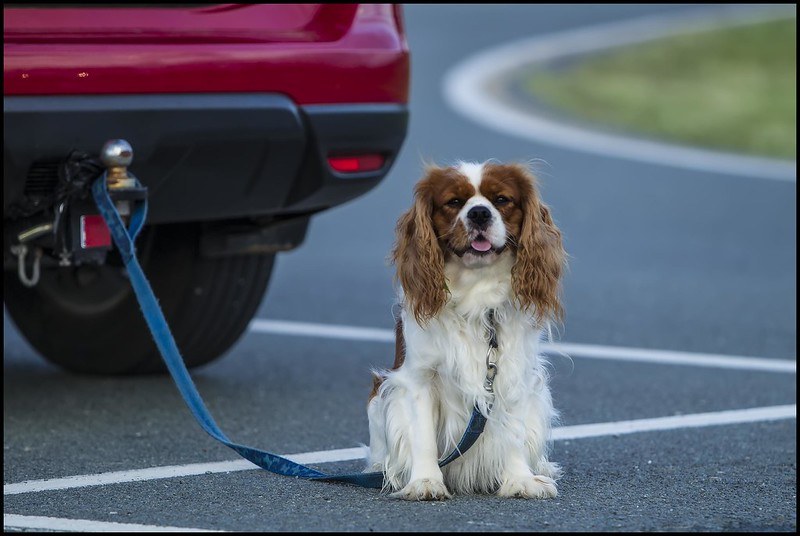
Microchipping May Come to The Rescue
While thinking of any Cross country road trip with a dog planner, it is essential to keep a space for emergency circumstances. There are possible chances while planning a cross-country road trip with your dog, that they might get separated from their owners. To avoid such bad events, microchip your pet . Veterinarians can easily find your lost dogs if they are microchipped before the trip.
Car trips with dogs have to keep under strict supervision , however, surprise accidents can be prevented with a microchip. Dogs get very excited outdoors and tend to wander off. Supervision and the presence of a microchip can avoid such unnecessary troubles. You may also like to know why your dog bites when excited .
Carrying Restraints for Your Dog
Car trips with dogs can be a memorable but also taxing experience if precaution is not taken correctly. They are to be secured carefully to avoid them fussing around in the back of the car due to the lack of activity. Using kennels or harnesses which is comfortable is exactly what to give a dog for a long road trip.
Many companies in the world specialize in the making of comfortable and easy-to-use safety gear for driving cross country with a dog . These gears give the owner relief that their pet is secured at the back while making any cross country road trips with dog .
Practice Car Rides are Important
Before thinking of any cross country road trips with dog, it is important to take your pets for small practice car rides. These experiments will give the dog owners a basic idea about the behavior during any long car ride with dog. Some dogs are fussier when their movement is restricted for longer periods. Before traveling cross country with a dog, or a long car ride with your puppy , understand how they can calm down and relax while you drive.
There are many ways the dog can be comforted while doing any pet friendly cross country travel ; those goods can be taken on the long car ride with dog for a better experience.

The Outside Environment Should be Kept Under Check
While planning any cross country road trips with dog , dog owners should keep in mind, the weather outside. Driving in extreme temperatures might not be a clever decision for a long car ride with dog. If you are taking dog on a road trip, careful and thorough research about the temperature while you drive and the temperature of your destination is important .
It is advisable to not undertake traveling cross country with a dog under such circumstances. Keeping them cozy will avoid them from getting heatstroke or hypothermia. Keep in mind that your dog has a different body temperature than yours.
Keeping an Eye on Your Dog
Car trips with dogs can be a fun-filled but exhausting experience. Even if you are tired, never forget to keep an eye on your dog. It is advisable to keep your dog and the road in focus while taking dog on a road trip. Some dogs can fall sick and their silence should not be taken lightly. There are many emergency vets available on different routes.
The availability of any pet friendly road trip planner makes the dog owners more secure about cross country trips with dog. Never should the dog be left unattended in a car. The best way to road trip with a dog is the one where they are happy and safe.

Do’ and Don’t in Cross Country Road Trips with Dogs
- Some dogs do take car rides excitingly and some don’t. Making a small trip with them before emerging on any cross country trips with dogis important.
- The destination should always be kept in the head while going on a long road trip with dog. Some hotels are not pet-friendly so dog owners should do their research well .
- Vaccinated dogs are safe for car trips. Make sure your Vet is on-board while planning a trip.
- For emergency purposes, make sure your luggage can be unpacked easily ; any cross country trips with dogcan be a hassle so luggage should be kept at arm’s length.
- Surprises are common in any cross country road trips with dog. Be ready for emergencies .
- Never leave the dog unattended or near the window.
- Do not let them chew on alien objects ; it might make them sick on the journey.
- Let them take maximum rest during the halts while any cross country trips with dog.
Car trips with dogs are the best way to spend quality time with your special friend. You get to know each other more and use it to get the much need vacation with your pet. It might prove one of the best experiences of your life.
Happy tripping everyone!
Read Next :
- How Stressful is Flying for Dogs? Root Cause & Tips to Reduce
- How to Fly with Your Dog On A 10 Hour Flight?
The Ultimate Guide for Hammock Camping with Dog
Faq on cross country road trips with dogs, 1. is planning cross-country road trips with dogs good.
A : You and your dog will have the best time on the road. Go ahead!
2. How long can a dog be inside the car?
A : They can remain comfortable inside the car but breaks are necessary.
3. Can dog be good companions for road trips?
A : Yes, they are great fun for road trips.
4. Is supervision really important for cross-country trips with dogs?
A : Yes. Constant vigilance has to be kept for a safer journey.
5. How do you calm your dog during a long road trip?
A : Taking their favorite goodies and distracting them might help the case.
Similar Posts

20 Ultimate Hiking Gear For Dogs
Dogs are our best friends! We all love to take this furry pal with us on a journey. If you are an avid traveler you don’t wanna leave your dog at home while you’re on a trip. Right? So when you take your dog with you on any trip you might have felt that like…
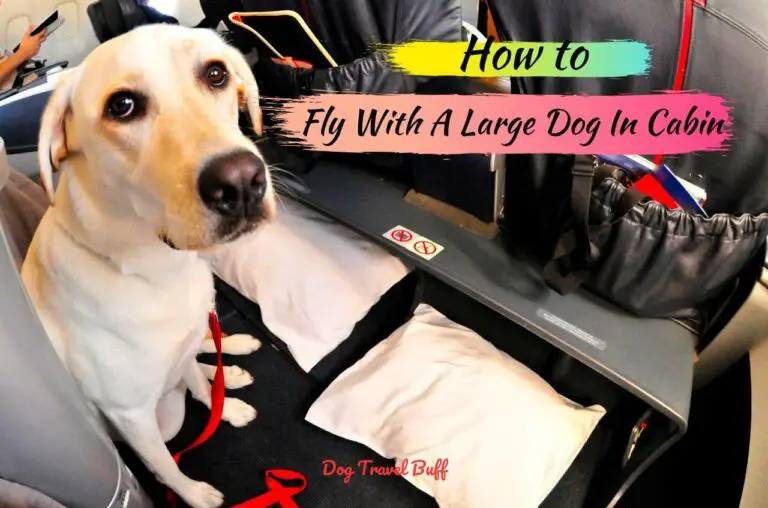
6 Things To Know Flying With A Large Dog In Cabin: Airlines That Allow Large Dogs
It is always easy to carry a small dog with you while you are traveling by flight. But flying with a large dog in a cabin is a pretty hectic and challenging thing to do. We dog lovers do not want to leave our furry pal behind. For the first time, when we took our…

6 Tips on How to Get Sticky Seeds off Dog Fur
This article is all about how to get sticky seeds off dog fur. Many dog owners scorn their dogs’ fur and ignore maintaining the same. Often after playing with the dog in the field the seeds get stuck to the dog’s fur and become tangled in it, creating a difficult-to-clean mess. We’ll go through some…
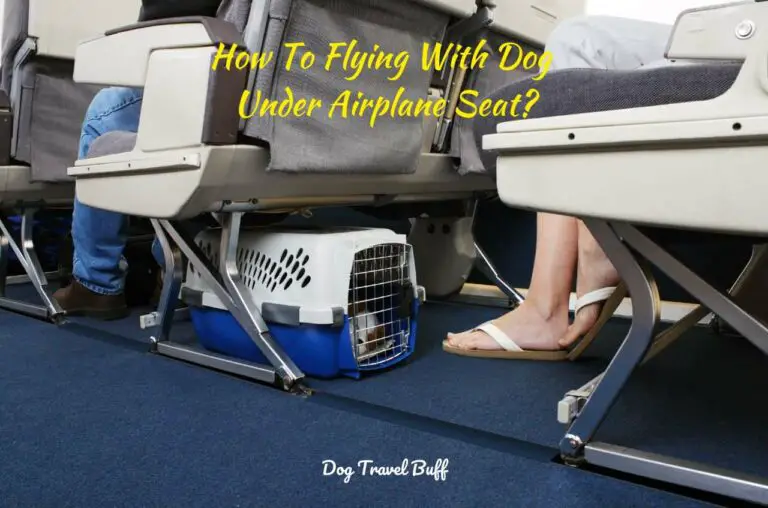
How To Travel With Dog Under Airplane Seat? Pet Policy, Cost & Tips
I am moving to Florida. I do not know how to take Benji with me. I cannot leave her behind. This post may contain affiliate links. If you buy something through one of those links, you won’t pay any extra penny, but I’ll get a small commission that encourages me to deliver more helpful content for you….
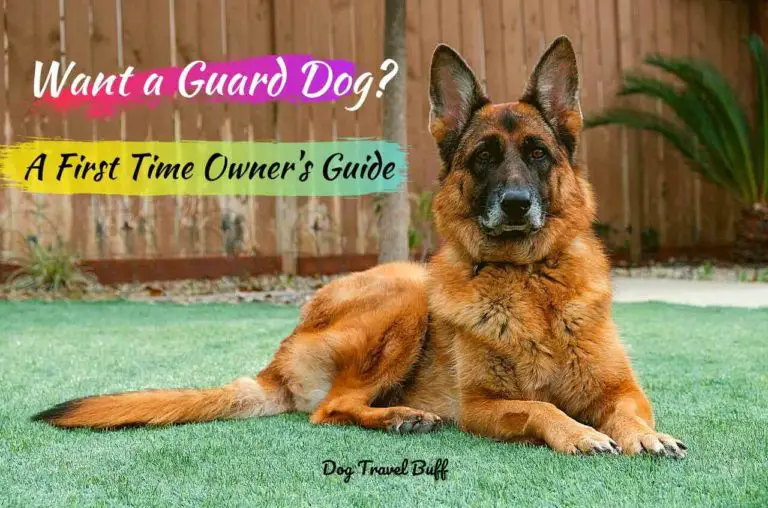
Want a Guard Dog? A First Time Owner’s Guide
Getting yourself a pet can largely be an act of love. However, your pet can also serve an essential purpose and become completely indispensable to your safety and convenience. This is especially true when it comes to guard dogs. While they are adorable and beautiful animals dedicated to their masters, they are generally the kind…

Dogs are a constant companion in life, our already mundane lives get more boring without them. Hammock camping with dog can be a great idea if you know how to do it. Any holiday or outing seems empty and forlorn without our pups. Some consider taking dogs camping, to be an unnecessary hassle, they do…
Cross country road trip with my dog was challenging and fun. My Bruno loved it and we are planning for our next trip.
Thank you Steven.
Leave a Reply Cancel reply
Your email address will not be published. Required fields are marked *
Save my name, email, and website in this browser for the next time I comment.

Cross Country Road Trip with Dog: Essential Tips
By Author Mary Ware
Posted on Published: February 8, 2024
Categories Packing Lists & Tips , Travel By State
Sharing is caring!
Going on a cross-country road trip can be an exciting and memorable experience. The adventure of exploring new places, meeting new people, and creating unforgettable memories – it’s no surprise that many travelers dream of embarking on an epic journey across the United States. However, if you have a furry companion in your life, you might wonder how to make a long journey with a dog not only enjoyable but also comfortable and safe for both you and your pet.
Traveling with a dog presents its own set of unique challenges and considerations. From finding pet-friendly accommodations to planning frequent stops in beautiful and safe locations, a successful road trip with your four-legged friend requires thorough planning and preparation. In this article, we will discuss some essential tips and guidelines to help make your cross-country road trip enjoyable for both you and your canine companion.
By following these suggestions and doing your due diligence in planning your journey, you can ensure that your dog remains happy, healthy, and safe throughout the entire trip. So, strap yourselves in and get ready to hit the open road with your loyal companion by your side for an adventure of a lifetime.
Table of Contents
Planning the Trip
Creating an itinerary.
To make the most of your cross-country road trip with your dog, it’s important to create a comprehensive itinerary. This should include your planned route, must-see attractions, dog-friendly park stops, and lodging options. Start by listing your desired destinations and work on the sequence of your stops.
- Research pet-friendly attractions and activities at each destination
- Identify dog parks and rest areas for letting your dog stretch their legs and use the bathroom
- Schedule breaks for meals and relaxation
- Allocate time for any unexpected stops or delays
Selecting Pet-Friendly Accommodations
A key aspect of planning a cross-country road trip with your dog is finding pet-friendly accommodations. This may include hotels, motels, campsites, or vacation rentals. Utilize resources like Go Pet Friendly and petswelcome to locate suitable lodging along your route.
When booking accommodations, consider the following factors to ensure your dog’s safety and comfort:
- Pet policies and restrictions
- Availability of pet amenities (e.g., bowls, beds, treats)
- Proximity to dog-friendly parks or trails
- Additional pet fees or deposits
Planning Your Route
Once you have your itinerary and accommodations in place, it’s time to plan the route for your cross-country road trip. Aim for a balance between time efficiency and opportunities for enjoyable experiences with your dog. Remember to keep the following in mind:
- Plan frequent stops for bathroom breaks and exercise, ideally at dog-friendly rest areas
- Be mindful of the weather and road conditions, as they may affect your route and could cause delays
- Check for any travel restrictions or requirements related to pets in different states
- Keep potential backup routes in case of unexpected changes or emergencies
By thoughtfully planning your cross-country road trip with your dog, you’ll ensure a memorable and enjoyable experience for both you and your furry companion.
Preparing Your Dog
Vaccinations and veterinarians.
Before embarking on a cross-country road trip with your dog, it’s essential to ensure they are up-to-date with all necessary vaccinations. Consult your veterinarian about any additional vaccinations your dog might need depending on your travel destination. Carry your dog’s documents, such as their vaccination record and any certificates, as you may need to present them while traveling.
During the trip, be prepared for any potential health issues your dog may encounter. Locate veterinarians near your planned stops, and have their contact information handy in case of an emergency.
Training Your Dog for Long Trips
To ensure your dog is comfortable during the long journey, start by gradually increasing the duration of car rides. Begin with short trips to places your dog enjoys, such as parks, then slowly progress to longer rides The Spruce Pets mentions that building up to hour-long car rides can be helpful. This will help your dog become familiar with and adapt to the sensation of being in the car for extended periods.
Additionally, consider the following tips:
- Use positive reinforcement (e.g., praise or treats) to reward your dog for good behavior during car rides
- Ensure your dog has a comfortable and secure space in the car, such as a crate or a seatbelt harness
Dealing with Car Sickness
Car sickness is a common issue for dogs during road trips. To help prevent this, take measures to make the car ride as smooth as possible. Some strategies to minimize car sickness in dogs include:
- Limiting food intake before car rides to reduce the likelihood of vomiting
- Providing adequate ventilation and maintaining a comfortable temperature in the car
- Taking frequent breaks for your dog to stretch and get some fresh air
If your dog continues to experience car sickness despite these precautions, consult your veterinarian for potential treatments, such as anti-nausea medications or interventions to help manage anxiety.
Packing Essentials
Dog travel kit.
When preparing for a cross-country road trip with your dog, it’s essential to pack a well-stocked dog travel kit. Some items to include are:
- Food: Pack enough food for the duration of the trip, plus an additional week’s worth, in case of unexpected delays. Remember to feed your dog at least three to four hours prior to departure to avoid accidents in the car.
- Medication and Supplements: Don’t forget any medications or supplements your dog needs.
- Dog Bowls: Collapsible bowls are great space-saving options for food and water.
- First Aid Kit: Include a basic first aid kit specifically for dogs.
- Blanket, Crate, and Bed : Bring these items to help your dog feel secure and comfortable in unfamiliar surroundings.
- Leash and Collar: Pack a sturdy leash and collar with updated identification tags.
Cleaning Supplies and Waste Management
Accidents and messes can happen while on the road. Stay prepared with cleaning supplies and waste management items, such as:
- Paper Towels: Perfect for cleaning up messes and spills during rest stops or in the car.
- Wet Wipes: Useful for wiping your dog’s paws or fur after walks or outdoor adventures.
- Litter or Puppy Pads: These can be used to create a designated bathroom area for your dog during rest stops or at your accommodations.
- Poop Bags: Don’t forget a supply of poop bags to clean up after your dog during breaks.
Toys, Treats, and Comfort Items
To keep your dog entertained and comfortable during the trip, pack some toys, treats, and comfort items:
- Toys: Bring a variety of toys to engage your dog during downtime at rest stops or your destination.
- Treats: Pack your dog’s favorite treats to reward good behavior and provide a familiar taste of home.
- Comfort Items: Include items like a familiar blanket or stuffed animal to help reduce stress and anxiety on the journey.
By preparing a comprehensive packing list and including these essentials, your cross-country road trip with your dog will be an enjoyable and stress-free adventure.
On the Road
Taking regular breaks.
When embarking on a cross-country road trip with your dog, it’s important to take regular breaks at rest areas and gas stations . This allows both you and your furry companion to stretch your legs, grab a snack, and stay hydrated. Ensure that you have a comfortable and secure area for your dog to rest during these stops, such as a crate or a designated spot in your vehicle.
Navigating Pet-Friendly Restaurants
Finding pet-friendly restaurants along your route is essential for a smooth trip. Many establishments now allow dogs on their outdoor patios, making it easy for you to enjoy a meal with your pet. Research pet-friendly eateries ahead of time to avoid any surprises. Keep in mind that some restaurants may require your pup to be leashed and well-behaved while on the premises.
Managing Potty Breaks
Managing potty breaks for your dog on a cross-country road trip can be challenging, but with careful planning, it can be done successfully. Always remember to:
- Bring plenty of waste bags and dispose of them properly
- Choose appropriate locations for your dog to relieve itself, such as grassy areas or designated pet zones at rest areas and gas stations
- Be mindful of local leash laws and keep your pet on a leash when necessary
- Reward your dog with praise or treats for successful potty breaks, helping them adjust to the new routine
By following these tips and being flexible with your travel plans, you and your dog will have an enjoyable cross-country road trip experience.
Destinations and Attractions
National parks and campgrounds.
Taking your dog along for a cross-country road trip gives you the opportunity to explore some of America’s most beautiful National Parks. Many pet-friendly national parks and campgrounds offer great hiking trails for both you and your furry friend. For example, Grand Canyon National Park in Arizona has magnificent views and designated pet-friendly trails. In Washington, North Cascades National Park offers a variety of trails and scenic overlooks. Montana’s Glacier National Park and Colorado’s Rocky Mountain National Park also provide fantastic pet-friendly experiences. Remember to always keep your dog leashed and check specific park regulations before visiting.
Dog Parks and Pet-Friendly Beaches
In addition to national parks, your road trip may lead you to various dog parks and pet-friendly beaches across the country. Cities often have designated off-leash areas where your dog can run and play with other dogs. Some popular pet-friendly beaches include Huntington Dog Beach in California and Fort De Soto Park in Florida. Always be mindful of signs indicating pet-friendly zones and adhere to the posted rules.
Common Stopovers and Attractions
A cross-country road trip with your dog wouldn’t be complete without experiencing some iconic tourist attractions along the way. While some attractions may not allow pets in certain areas, there are plenty of pet-friendly spots to explore. For example, you can stop at:
- Mount Rushmore in South Dakota, where dogs are allowed on designated pathways
- The Petrified Forest in Arizona, offering pet-friendly trails and picnic areas
- Bass Pro Shops at the Pyramid in Memphis, Tennessee, described as a dog-friendly amusement park
As you plan your cross-country road trip with your dog, be sure to consider all the pet-friendly options available for national parks, campgrounds, dog parks, beaches, and tourist attractions. This ensures that both you and your furry companion have the best possible experience throughout your journey.
Pet-Friendly Accommodations
Hotels and motels.
When planning a cross country road trip with your dog, finding pet-friendly accommodations is essential. Many hotel chains like Best Western , Comfort Inn, Clarion Inn & Suites, Courtyard Marriott, Holiday Inn Express, Red Roof Inn, and Sheraton welcome pets and offer comfortable lodgings for you and your furry travel companion. Keep in mind that some hotels might charge a pet fee, which varies by location and hotel.
To find hotels along your route, take advantage of petswelcome.com , allowing you to search for pet-friendly hotels based on your travel itinerary. This tool makes it easy to plan stops and ensure your dog has a comfortable place to rest.
RV Parks and Campgrounds
If you prefer a more outdoorsy experience, many RV parks and campgrounds are pet-friendly and the perfect option for those traveling with their dog. These locations often provide open spaces and trails for exercising your pet while also accommodating RVs and tents for overnight stays. When considering an RV park or campground, always check their specific pet policies to ensure a hassle-free stay.
Alternative Lodging Options
As an alternative to traditional hotels or campgrounds, consider renting a pet-friendly vacation rental through websites like Airbnb or VRBO . These platforms often have filters that allow you to search for accommodations that welcome dogs and other pets. With vacation rentals, you can tailor your lodging experience to the specific needs of both you and your pet, offering a more personal touch during your cross country adventure.
Remember to carefully plan your accommodations in advance and choose locations that best fit the needs of both you and your dog. By staying at pet-friendly hotels, RV parks, campgrounds, or vacation rentals, you can ensure a comfortable and enjoyable cross country road trip experience with your furry friend.
Get Our Travel Tips and Freebies!
Join our travel community and get weekly updates with travel tips, locations, and freebies. Can't wait to connect with you!
Privacy Overview
- EVERYTHING YOU NEED TO PLAN YOUR ROAD TRIP

- Inspiration
- Packing Lists
- Road Trip Advice
7 Helpful Tips for a Cross-Country Road Trip With a Dog

Nothing beats the freedom of hitting the open road with your best friend by your side and some of your favorite tunes playing over the car stereo. If your dog is your best buddy, taking a road trip with him or her adds a whole new dimension of fun and excitement to the trip. One of life’s greatest pleasures is sharing a trip with a furry friend, yet, there are difficulties sometimes on a cross-country road trip with a dog. Traveling with your pet might be stressful if you don’t know how to accommodate their unique set of needs.
I’ve spent endless hours on the road with my dogs because I’m a huge fan of both road trips and dogs. I’ve been all over the west coast with my dogs, from many road trips in Washington to longer ones down the Oregon Coast. The experiences I’ve had and the places I’ve been have given me a wealth of knowledge that I’m happy to pass on to others. When planning a trip with your dog, every detail counts, from learning his or her travel habits to assembling the ideal canine luggage.
This all-inclusive manual is designed to assist you in facing the one-of-a-kind obstacles you’ll face on the road with your dog. This article will help you handle everything from pit stops and meals to keeping your dog quiet on long trips. If you put in the time and effort, your next vacation in the car with Fido can be the trip of a lifetime!
Table of Contents
Road Tripping With a Dog FAQs
There’s nothing quite like being able to show your dog the world — or at least the country. Hiking with your dog to waterfalls , playing in the snow, and jumping into piles of fallen leaves in every state is a wonderful way to spend a vacation .
If you’re planning a fun road trip and taking your four-legged friend with you, it’s best to be prepared. Dogs need space to exercise and lots of clean water . They also thrive on routine (not something in surplus while road-tripping). They can, however, be great road trip companions if you do it right.
So before you organize the car and begin the drive, here are some questions I’m often asked about road-tripping with a dog .
How Long Can a Dog Go on a Road Trip?

Driving cross country with a dog isn’t too different from driving with a baby (where you’ll also need plenty of tips for a road trip with a baby ) — or even just another adult. They can sit for only so long before they need to get out of the car and stretch their legs . The exact period of time your dog can handle the car will depend on many different things.
Some dogs are more comfortable in cars than others, some have more energy to expel, and some are quite happy sitting or sleeping for most of the day . You know your dog best. So when planning your road trip, schedule stops every couple of hours for everyone to stretch, drink water, and breathe some fresh air.
If you stop often enough , and your dog is okay with the car, you could probably manage multiple days on a cross-country road trip with a dog.
How Often Should You Let Your Dog Out to Pee on a Road Trip?
If your dog shows signs of needing a bathroom break, I’d suggest stopping as soon as it’s safe. Otherwise, generally, every two to three hours is ideal for bathroom breaks. If your dog is still a puppy, you may need to stop sooner than this.
When you do stop, try to encourage your dog to pee, give them some water, and perhaps take them for a short walk to allow them some privacy . If you’re noticing that your dog is not peeing when you stop, there may be something wrong, and it would be best to check in with a vet.
Why Won’t My Dog Go to The Bathroom on a Road Trip?
Certain dogs have no problem doing their business wherever they are — when nature calls and all that. Other dogs may be shy or uncomfortable in new places . Being on the road means your dog is in strange spaces, and unfamiliar sounds and smells can distract them .
They may also be experiencing some anxiety which can make bathroom breaks harder. Try to find quieter spots for your dog when you stop. An environment as close to their usual bathroom area as possible is ideal. If you’re worried that their hesitation is becoming a problem, find a vet on your trip , and they can prescribe something to help.
I’ve been using Roadtrippers for years to help me plan out my trips and find fun stops along the way. Use my code “BTR5QTP” for $5 off when you sign up!
Why Does My Dog Have Diarrhea During Road Trips?
Diarrhea while on the road can be caused by a few things. It could be from motion sickness or from stress . Both of these can be treated with a vet’s meds, which should help the situation.
Your dog’s diarrhea might come from eating things they shouldn’t along the road , which should be avoided as much as possible. It’s also not a good idea to change their diet while on the trip, so try to bring their usual food with you.
Lastly, an upset stomach could be caused by an infection or parasite . If it persists and is not getting any better, I’d suggest taking your dog to the nearest vet to get checked out.
How Do You Use The Bathroom When Traveling Alone With a Dog?
It’s not just your dog’s toilet breaks that you need to schedule. You need to plan for your own needs as well.
If you’re traveling alone with your dog, it’s best to stop off at pet-friendly rest areas with bathroom facilities, allowing you to secure your dog’s leash somewhere. You can then use the bathroom while your dog gets some fresh air, and you both get to stretch your legs while traveling cross country with a dog.
How Do I Keep My Dog Calm on a Long Road Trip?

If your dog is shaking, crying, or not enjoying the drive, it can take much of the fun out of your trip. You want your pup to be as happy as you are on the road.
The easiest way to keep your dog calm in the car is to begin before you even leave. Getting them comfortable on longer drives — but slowly — is the first step (and one of my top tips on a cross-country road trip with a dog!). Then make sure the car has their toys and blankets and is a safe space for them.
Some dogs will enjoy calming music while in the car , and some soothing ear scratches may also help. If you’ve done all of this and your dog is still scared of the drive, you may need to look at calming meds from your vet.
How Do I Feed My Dog on a Road Trip?
Feeding your dog on the road isn’t too different from feeding them at home — only the scenery changes. I wouldn’t suggest you try to feed them in the car while it’s moving . Rather stop at a gas station or pit stop area and do dinner time.
A travel-friendly bowl , a seal-tight container for food, and lots of water are all you need to have with you for a cross-country trip with a dog. Try to stick to your usual routine and dinner times to keep your dog feeling safe and happy.
Traveling with children? Make sure to have enough road trip snacks for kids as well!
What to Pack for My Dog on a Road Trip?

I have a long list of things to pack when driving with the family , but even though dogs are a little lower maintenance, they still have their own needs. If you’re taking your pet along on your road trip, make sure you have the following items with you:
- Safety harness – Keep your dog leashed and secure at all times to avoid them getting hurt or lost. Also, ensure that your dog always has an ID tag on them.
- Collapsible water and food bowls – These will collapse down to save space, and they’re really handy for hikes and other trips too. You can pack a few bottles of water and some food separately.
- Toys and chew treat s – Pick out a couple of your dog’s favorite toys and some hardy chew toys to keep them busy during the drive. Their toys will also help keep anxiety down by providing homely comfort.
- Back seat cover – This will help keep shedding hair in one spot, but it also creates a sort of hammock on the back seat for your dog, which is cozy and safe.
- Blankets and towels – Bring some scents from home with you and pack a few blankets and towels into the car for your dog to lay on.
- Pet first-aid kit – Include bandages, antiseptic wipes, tweezers, and any necessary medications prescribed by your vet.
- Waste bags – A good owner knows to clean up after their dogs. Having good waste bags and perhaps a car bin, in case you can’t find a bin where you are, is important.
- Brush and other grooming supplies – Just because you’re on the road doesn’t mean it’s time to slack on your dog’s grooming routine. Carry the grooming essentials to keep your best friend looking spiffy on the road.
Make sure to reserve your rental car ahead of time! I love using Discover Cars for my trips.
Tips For Cross-Country Driving With Your Dog Safely

A long-distance drive can be fun for humans and dogs as long as it’s done with preparation and planning. Below are some more tips I often give to anyone wanting to road trip with dogs.
Get Your Dog Comfy in The Car First
One of the most important things is to ensure that your dog is comfortable in the car . If this is their first time driving with you, then a long-distance trip is probably not wise. Take shorter journeys around your town and stop in at the dog park or at friends’ houses, or just take drives around the block until your dog seems more at ease .
Book a Vet Check-up Before You Leave
I’d still suggest noting vets along your route, but it’s always more reassuring to have your usual vet look at your dog before the trip. So do a general check-up , make sure your dog is healthy, and ask any questions you might have while there. This is especially important if going on a long road trip with a new puppy.
This would also be a good time to ask your vet if they’d suggest any calming medicine for your dog during the drive.
Looking to pass the time with your companions? You’ll love this trivia for road trips .
Safety First Always
It’s important that you don’t allow your dog to roam freely in the car . This can distract the driver, and if you have to break hard or get into an accident, your dog will be hurt the worst.
Ensure they are strapped in using a car strap or in a specialized dog car seat. Or if they are crate trained, you can bring their crate in the car with you during cross country travel with a dog.
Get your free road trip packing list here!
Plan Your Route

Road tripping as a couple can mean you drive where the wind takes you. Planning ahead becomes more essential as soon as you add a dog into the mix.
Check your route before you leave, and write down all possible stops (even if you don’t stop there, have them handy just in case). It’s also a good idea to keep track of all pet-friendly (and non-pet-friendly) spaces you’ll encounter along the way.
When setting out your itinerary and travel time, always budget more time than you think you’ll need . Dogs aren’t designed to be cooped up in cars, and to keep them happy, you may just need to stop a lot more than you’d bargained for.
Set aside time for multiple stops along the way, and try not to rush these. Make sure your dog is hydrated, take them on a short walk, and if there’s time, play a little game. All of this will keep the drive smooth and joyful.
Check For Accommodations
When you’re traveling with the (full) family, finding accommodations that allow dogs can be tricky. There are, thankfully, quite a few pet-friendly hotels and camping grounds that you can book.
To alleviate any stress on the road, check your accommodation options and book them as early as you can. This ensures that your dog is welcome, that you know where you’ll be sleeping, and that other pet owners won’t beat you to it.
Rent a SniffSpot
Did you know you can rent a secure, open space for your dog to run while on the road? SniffSpot is kind of like an Airbnb for dog parks . People all over the world list their large areas of land and then charge for their dogs to spend an hour or two expelling some pent-up energy. This is a cool and thoughtful way to cater to your furry friend while en route.
Traveling with your pup is a fun experience, so make sure to keep these tips for a cross-country road trip with a dog in mind to make yours that much smoother!
Marissa Pedersen
Marissa is a passionate road trip enthusiast who has traveled extensively throughout the United States and Canada via car and continues to go on new trips every year to explore more of the country. Her love of road tripping has given her a unique perspective on the best routes, hidden gems, and must-see attractions along the way.
Leave a Reply Cancel reply
Your email address will not be published. Required fields are marked *
Save my name, email, and website in this browser for the next time I comment.
How to Travel with a Dog Cross Country
“Wanna go for a ride?” Most dogs love to hear those five little words (unless they fear it’s a trip to the groomer or the vet). However, driving cross country with your best friend is a lot different than taking a Sunday afternoon drive. It requires preparation and planning to be sure both you and your pooch are comfortable. Here are five things you should do to prepare for a cross country road trip with your dog, along with 12 essential items to pack.
Schedule a Vet Wellness Visit
You want to be sure your dog is in good health before taking to the road. So, schedule a wellness check-up with your veterinarian. Your vet can make sure they’re up to date with all vaccinations and medications, and can discuss treatment for nausea (while most dogs do fine on short trips, longer trips can test their tummies).
Map Out Your Trip
While you may like the idea of an unplanned adventure, bringing along your buddy requires planning for multiple pit stops and knowing what hotels have pet-friendly accommodations (there’s nothing worse than being dog-tired – and being turned away because of your dog!). You may also want to pinpoint some emergency vets (just in case) and some pet stores (for restocking) along your route.
Create a Doggy Safe Space
You may think it’s cute having your pup ride shotgun, or even in your lap, but this can be very dangerous and is even illegal in some states, it also gets old really quick on a long road trip. Instead, give them their own space in the backseat (you can even purchase a divider to be sure they stay back there), or if they're anxious and prone to wandering in the car, you can crate them in a comfortable kennel that allows for plenty of air circulation and visibility so they know you’re never far.
Consider a Driving Harness
There are many dog harnesses designed for driving with your dog on the market, but you should know that not all are created equally. The Center for Pet Safety (CPS) website lists three crash test-certified harnesses , and by clicking on each you can view a successful crash demonstration using a “crash-test doggie.” They also provide a list of CPS certification requirements and the certification logo to look for on approved products.
Pack in Advance – 12 Essential Items for Pet-Friendly Travel
Don’t pack for your pet the morning you hit the road – you’re bound to forget something. Instead, get everything together a day or two beforehand. That will give you time to remember things you may have forgotten. Here are 12 essential items to pack for your road trip with your dog.
1. Dog Crate
Even if you don’t intend to crate your dog in the car, some hotels, even those that offer pet-friendly travel, require you to have a crate.
Preferably this bed will be one from home that your dog is already familiar with to offer comfort on the road. Also, pack their favorite blanket for security and warmth.
3. Medicine
If your dog takes any medications regularly, or your vet has given you an anti-nausea solution, remember to bring them with you.
4. Food, Bottled Water, and Treats
This may seem obvious, but our list wouldn’t be complete without it.
5. Food and Water Bowls
Another no-brainer, however, you may want to consider collapsible travel bowls like this Ruffwear Quencher to save room and to make eating on the go more convenient.
6. Toys and Chews
You’ll have your eyes on the road to keep you busy and can use the radio for entertainment; your dog, however, is likely to get bored, especially since their normal walking routine will be out of whack. Give them an outlet with toys and chews to give them something to do during the journey.
7. Bad Weather Gear
You never know what type of weather you’ll encounter when driving across the country, so always be prepared. You may want to pack a doggy rain slicker or sweater, along with towels to dry your pup (and clean his paws).
8. Grooming Supplies
Don’t neglect your pet’s grooming regimen just because you’re on an adventure. Also, you may need to brush out some knots if you get caught in a downpour.
9. Cleaning Supplies
If your dog gets car sick or has an accident due to nerves, you’ll want some cleaner and paper towels (and perhaps a deodorizer).
10. Puppy Pads
Your buddy may no longer be a puppy, but puppy pads can offer relief during overnight stays when your dog is off the normal potty schedule.
11. Paperwork
It’s a good idea to have a copy of your dog’s paperwork (vaccinations, etc). Some hotels require this, and it can also put someone at ease if your dog happens to snap at them at a rest stop, etc.
Sometimes, a dog is so excited to get on the road that they hop in the car on their own – and their owner then forgets the leash!
Are You and Your Dog Ready for the Road?
These are our tips for the best way to travel with a dog. You can also plan to do the same when you’re moving cross country with a dog. One final bit of advice that all responsible pet owners understand: Never leave your dog alone in your vehicle for any length of time. Dogs can overheat quickly when it’s hot out, and the AKC reports that hypothermia can also occur during the cold months.
If you’re planning to go cross country and just don’t think it’s feasible to bring your best friend, you do have another option: My Pet Cab. With a national network of pet transportation professionals, we offer the safest nationwide pet transportation service . My Pet Cab combines specialists in the transportation industry with experts in the pet-handling business to ensure easy pick-ups, safe rides, and timely drop-offs.
We are members of the International Pet and Animal Transportation Association , and you can learn more about our services on our website . Otherwise, now that you know how to travel with a dog cross country, happy tails to you!

Related Posts
7 pet travel blogs you should be following.
Okay, so you want to know what your pet-friendly travel options are before you leave your home. To get this info, you do what ...
Pet Travel Options in the USA during Coronavirus
The COVID-19 epidemic continues to grow worse as new cases spring up. As of March 29, 2019, the Centers for Disease Control ...
Pet Travel Tips for Cat Owners
Traveling with a cat can be a bit of a challenge, to say the least. Cat owners know how independent their cats can be—and ...

Tips for a Cross Country Road Trip With Dogs
- January 6, 2023
- By Blair Salt
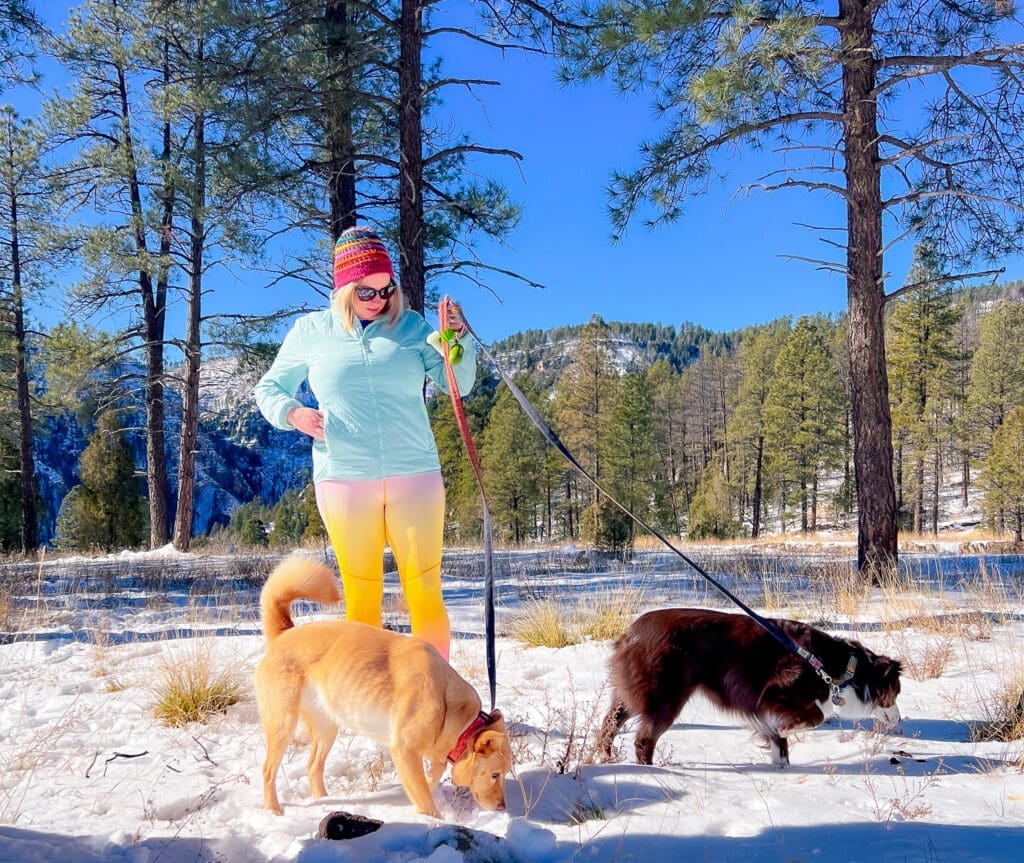
This past Christmas, Brady and I decided to drive back to Texas to spend time with our family over the holidays. We opted to drive instead of fly, because we wanted to bring June and Margot along! Driving cross country is no small feat, let alone driving cross country with a dog! This was our first big dog friendly road trip with the girls, and we learned a lot , from how to find pet friendly accomodations to what you actually need when you are on a long-distance road trip with a dog.
We also learned that the girls do really well on roadtrips. From the long hours on the road, to all of the new places and experiences, they handled everything like pros! This made us really excited to take more road trips with the dogs this year to explore more of Northern California and beyond.
*Disclosure: This post contains affiliate links. This means that I may earn a small commission, at no additional cost to you, if you make a purchase. Thank you for supporting my blog! I only recommend products I use myself, and all opinions expressed here are my own. Read my full disclosure here .
Preparation for the Perfect Pet Friendly Road Trip
There are a few important things to keep in mind when planning a cross country road trip with dogs. Firstly, your dogs should be comfortable with car rides. Many dogs can get anxious or car sick, so before embarking on a long drive, make sure your dog is comfortable. This might involve practicing short drives, teaching your dog to settle in the back seat, and working with a credentialed dog trainer to teach your dog how to be comfortable in the car. You can also chat with your vet about motion sickness medication or anti-anxiety medication, depending on what your dog is struggling with. Still, some dogs just won’t enjoy long distance drives ever, and that’s okay! There are also plenty of people who don’t love road trips, either.
Secondly, the best vehicle to travel cross country with dogs is going to be one that is reliable and safe (duh), but also one that has enough space for your dog to be comfortable! We have a hybrid 2022 Rav 4 and absolutely love it! The gas mileage is amazing, which helps save a few bucks on the road and also saves some time since you don’t have to stop for gas as often. It also has air vents in the back to help keep the dogs comfortable, as well as heated backseats, which the girls loved when we were in New Mexico and the temps were below 20 degrees.
Also, it has the perfect amount of space for two humans, two dogs, and all of our gear. Think about this: if you have a small car and your backseat is crammed with gear, your dog might not be very comfortable for long drives. We try to keep the back seat clear so both girls have plenty of space to move around and lay down, either cuddled up next to each other or with some space.
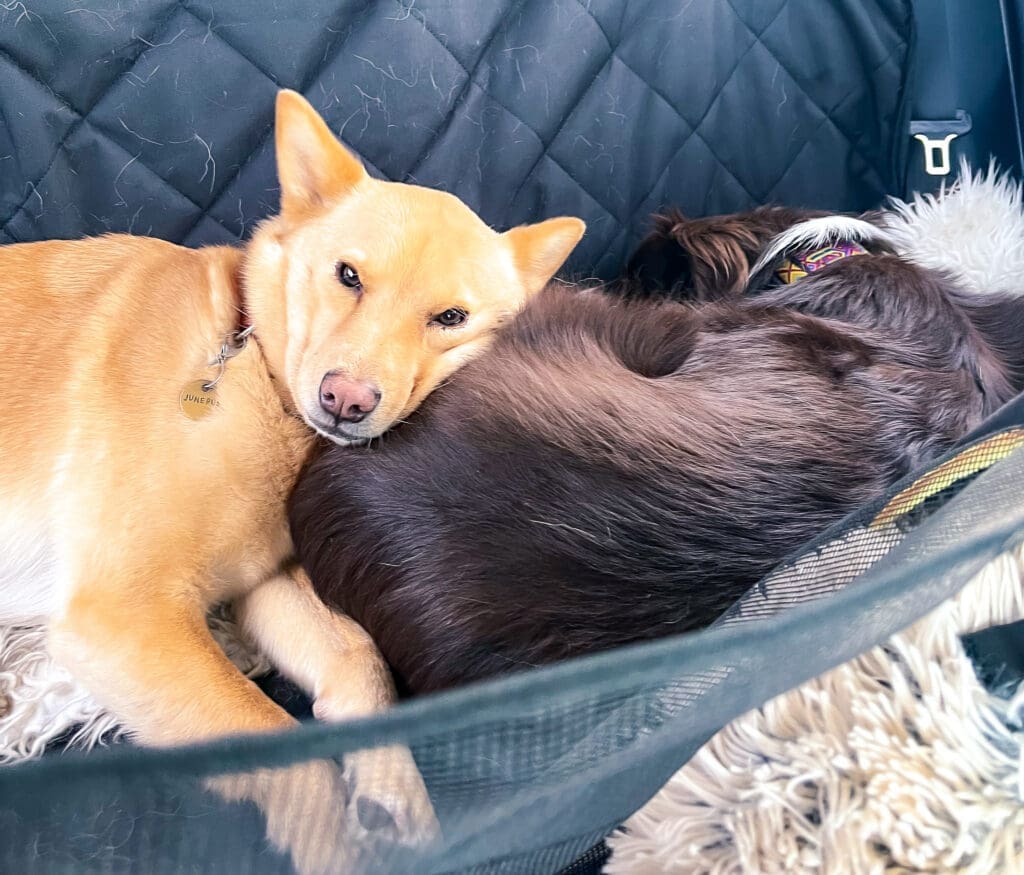
What to Bring on a Cross Country Road Trip with Dogs
In addition to your personal luggage with clothes and toiletries and whatnot, there are a few dog related essentials to add to your road trip checklist. Aside from the obvious (food and food bowls, collar with tags and leashes, etc), here are my recommended dog road trip essentials:
- Backseat cover
- Collapsible water bowl
Quality CBD
Treats and chews.
- Packable dog beds
Backseat Cover for Dogs
Firstly, if your dog is not riding in a crate, a backseat cover is crucial for traveling in a car with dogs– not just for road trips, but in general! I really prefer a hammock style cover with a mesh center to allow for better airflow, like this one . To make sure your dog is extra comfy, you could also consider throwing down an extra blanket so they can nest.
Silicone Water Bowl
Next, water. It’s easy to forget that your dog does not have access to water while hanging out in the backseat! To make water breaks a breeze, I like keeping this collapsible silicone water bowl handy. I can easily turn around and let the girls have a few sips of water and then collapse the bowl and keep it tucked into the glovebox or even on the floor boards.
While CBD will not replace anti-anxiety medication, it does provide some relaxation and stress relief. I like to compare CBD to a soothing cup of chamomile tea or aromatherapy. It’s not a cure all, but it does help take the edge off! I like adding a little CBD to the girls’ breakfast each morning to help them relax on the road, and I think it makes a big difference! Be sure you choose a quality CBD company that has third-party testing on their products to ensure efficacy, like BakedBones . We use their 600 MG tincture, and both June and Margot get 50 mg per day.
Treats are always important to keep on hand so you can reward all the behavior you want repeated, from settling nicely in the back seat, to bravely exploring a new hotel, to checking in with you on sniffy walks. I like these freeze dried tripe niblets from Vital Essentials, because they are stinky and high value, but also shelf stable! Chews are also a good thing to pack, because they are perfect for helping your dog decompress in a new space. Chewing is relaxing and engaging for dogs, so it’s a great way to help them settle. We brought these Pupford bully sticks on the road, and they were a life saver!
Packable Dog Beds
Be sure you back something for your dog to sleep on at night! Even dog friendly hotels and airBnBs may not allow pets on the furniture. Plus, good quality sleep is important for EVERYONE, your dog included. Giving them a comfy and familiar place to sleep ensures both you and your pup get a good night’s sleep. We brought our calming donut dog beds that the girls sleep in every night. They are pretty squishy and pack easily, plus they are machine washable!
How to Travel Cross Country with a Dog
The key to pet friendly travel is planning ahead. This includes where you are staying and what you plan to do when you get there. It’s helpful to identify dog friendly places in advance so you don’t end up in lurch. For example, many national parks are not dog friendly, and just because a hotel allows dogs does not, in my opinion, mean they are dog friendly.
1. Finding Dog Friendly Accomodations
When you first start searching for places to stay, it’s helpful to look at both Google and AirBnB. Both Google and AirBnB have filters for identifying places that allow dogs, which is super useful. For Google, this can be found under Google Travel > Hotels > Amenties. For AirBnB, you add the number of pets you are bringing when filling out the “Who” section of your search.
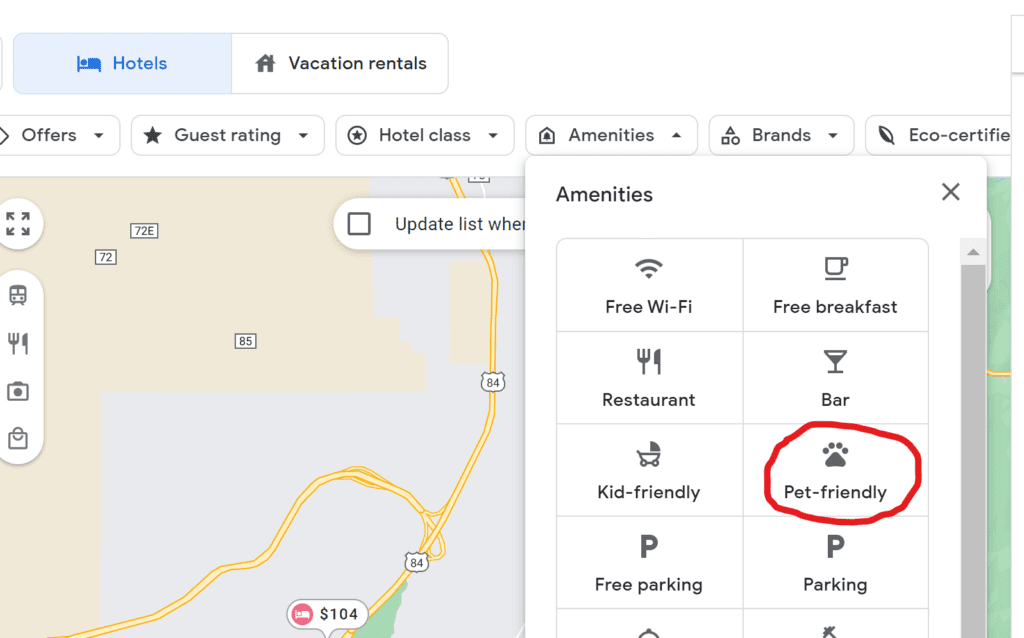
Traditional hotels and rentals like AirBnB have their pros and cons. While AirBnBs can be really nice (fenced in yards, interesting locations, bigger spaces), they have gotten a LOT more expensive with what I consider to be hidden fees (meaning you might search for places under $200, but after fees these places could be $300 or more in total). Hotels tend to have better amenities, like extra pillows, room service, or on-site restaurants, and truthfully they can be a bit more budget friendly. I think it’s good to look at both platforms and choose what works best for your needs.
My top tips are this:
- Wherever you stay, be sure there is easy access to a grassy area for potty breaks. One of the hotels we stayed in had no grass nearby, and we had to walk about a block and a half for the girls to use the bathroom. It was a MAJOR pain.
- King-sized beds are crucial. I would say the most important part of a long distance road trip is getting good sleep. I would prioritize a good bed over almost any other amenity, if I’m being totally honest.
- Take into consideration the size of the room. Is there enough space for you, your luggage, and your dogs? It can be hard to relax if you feel like you are constantly tripping over a dog or suitcase.
2. Best Places to Stop On the Road with Dogs
How often should you stop when on a road trip with your dog? And where do you stop? The obvious answer is a gas station. Gas stations make a perfect pit stop: you get gas, you can go to the bathroom, and your dog can go to the bathroom. Love’s Travel Stops are really nice, because they often have dedicated pet relief areas that are fully fenced in. I’m also a big fan of dedicated rest stops. In my experience, rest stops often have nicer facilities than many gas stations: cleaner bathrooms, for example, and more space for your dog to stretch their legs. RV parks could be another option, if they allow public visitors.
If you are looking for a good spot to take a break and get out of the car for a bit, try searching for a Sniffspot along your route and rent it for 30 minutes or an hour! This will give your dog some safe off leash time while you can relax, walk around, or enjoy a bite to eat.
3. How to Relax on the Road with Dogs
Have you ever noticed how tired you are after driving all day, even if you were just a passenger? It’s the same for dogs. A lot of people (myself included) worry about their dogs getting enough exercise when on the road, but I learned that rest and decompression are actually more important! In other words, the girls didn’t have pent-up energy at the end of the day so much as they needed to decompress: stretch their legs a bit, sniff, enjoy a chew, move around, etc.
To help your dog relax on the road, I recommend:
- Taking breaks every few hours or so and letting your dog get out of the car to sniff and potty.
- Allowing your dog time and space for a good sniffy walk before you start driving for the day and when you reach your destination. Even 10-15 minutes of good sniff time can help!
- Incorporate what your dog finds fun, whether that’s some playtime (tug, a small game of fetch, wrestling) or enrichment like chewing, shredding, sniffing out treats, etc.
Dog Travel Tips
I’m sure the more we drive cross country with the dogs, the more we will learn. While road tripping with dogs is super fun, it also has its fair share of challenges. It can be hard and stressful for you and your dog, so remember be kind and patient– and prioritize your sleep! If I had to sum up how to travel with a dog cross country into a few key tips, it would be this:
- Prioritize rest for you and your dogs! This includes sleep, relaxation, and decompression.
- Stop as often as you want, especially at points of interest, overlooks, etc. Road trip travel is as much about the journey as it is the destination.
- Always add 1-2 hours to whatever Google Map says your drive time will be. This gives plenty of buffer time for potty breaks, finding food, etc.
- Add a little warm water to your dog’s meals for extra hydration, and be mindful about giving your dog plenty of water throughout the drive.
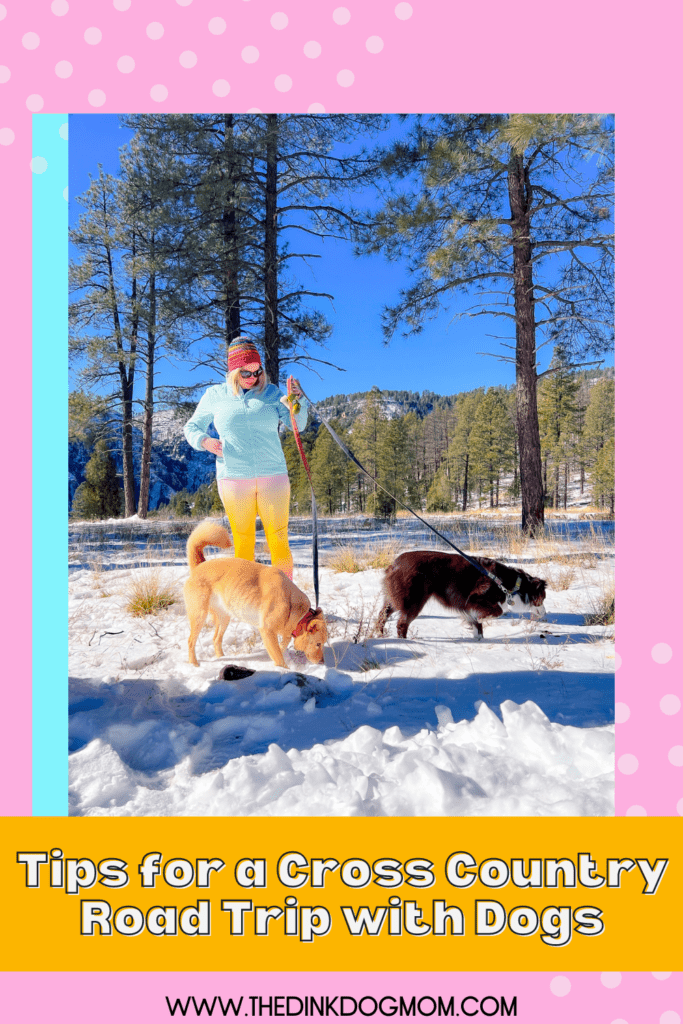
Related Posts

A Dog Friendly Weekend in San Luis Obispo

What to Pack for a Tropical Vacation

A Romantic Beach Vow Renewal Ceremony in Bora Bora
2 responses.
Pack plenty of food, water, bowls, a leash, and any medications your dog may need. Also, bring familiar toys and bedding to help your dog feel at home on the road.
Love the idea of packing familiar bedding and toys to help your dog feel at home!
Leave a Reply Cancel reply
Your email address will not be published. Required fields are marked *
Save my name, email, and website in this browser for the next time I comment.

HOME / BLOG / Road Trips 10 Top Stops On A Pet-Friendly, Cross-Country Road Trip
10 Top Stops On A Pet-Friendly, Cross-Country Road Trip
- October 29, 2018

This summer, Maricela and Jose packed the car to the brim, settled their English Bulldog, Toby, in the backseat, and embarked on the pet-friendly cross-country road trip of a lifetime! Today Maricela is sharing their 10 favorite stops on along their route.
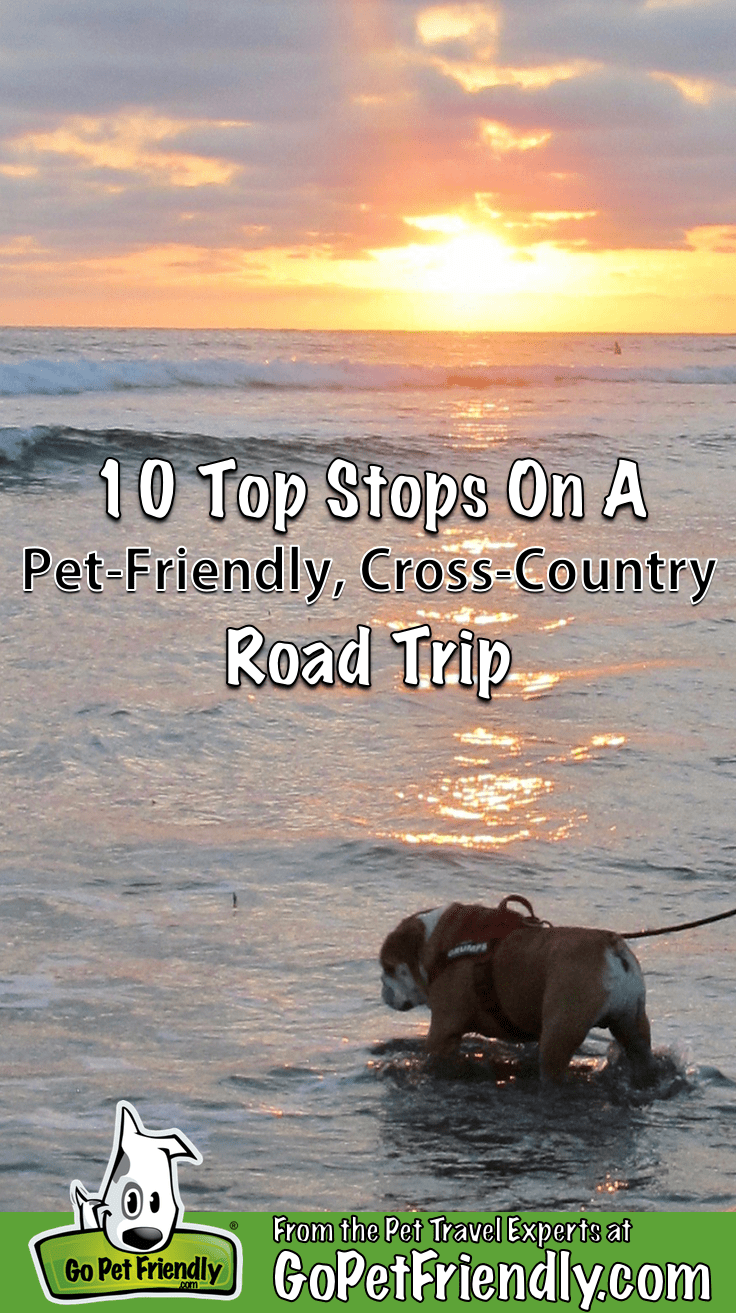
Planning A Cross-Country Road Trip with Pets
When we began planning our cross-country road trip, we knew we’d be taking Toby with us as we discovered America. By building the trip around our senior bulldog, we hoped to show how much life, joy, and adventure old dogs like Toby still have left in them.
We spent six weeks exploring 18 states, and these were our top 10, Toby-approved, favorite stops:
1. Bass Pro Shops at the Pyramid – Memphis, Tennessee
Imagine a giant glass pyramid worthy of the Las Vegas strip on the banks of the Mississippi River. With a hotel and multiple restaurants on the upper levels, the floor of this outdoor retailer looks and feels like a dog-friendly amusement park!
Carnival-style hunting games, a giant aquarium, and catfish, alligators, and ducks swimming in their respective ponds, were incredibly entertaining. And this was a wonderful pet-friendly place to walk Toby out the Southern heat and humidity.
READ MORE ⇒ Tips for Traveling Cross-Country with Pets

2. Lazy Dog Restaurant & Bar – Various Locations
In addition to having dog-friendly outdoor seating, Lazy Dog goes offers dogs their own menu! Toby skipped his usual kibble for the evening so he could try their grilled chicken with peas and carrots over brown rice.
We think he was pretty pleased with his meal (and the human food was excellent too!). We dined at the Euless, Texas location, but Lazy Dog has several locations in California and others scattered across the Southwest and Chicago.

3. International UFO Museum & Research Center – Roswell, New Mexico
This museum, supposedly dedicated to the infamous “Roswell Incident,” receives over 2 million visitors from around the world every year. Fortunately, many happen to be four-legged and furry! While the museum is small, we loved the novelty of being able to walk around inside with Toby.
Roswell’s locals also have an excellent sense of humor about their alien association. Be on the lookout for the little green cartoon aliens that appear all around town!

4. Old Town Albuquerque – Albuquerque, New Mexico
Unfortunately, we arrived after the majority of the businesses in Old Town Albuquerque had closed for the night. But Toby still enjoyed a good trot around the maze of restaurants, landmarks, and boutiques!
Though we were limited to window shopping, many of the stores displayed signs proudly welcoming dogs inside. When we return to Albuquerque, exploring Old Town properly is at the top of the to-do list!
5. Cardiff State Beach – Cardiff-by-the-Sea, California
This may be a somewhat controversial choice since this beach requires that dogs remain on-leash at all times. However, Toby does not play well with other dogs, so this beach was the perfect for us!
Relatively empty in the evenings with surfers dotting the horizon, Toby was free to jump in the waves and bark at the ocean to his heart’s content. And we didn’t have to worry that other dogs would approach him. For visitors with more dogs, Coronado Beach and Fiesta Island came highly recommended by locals we met.
READ MORE ⇒ Top Dog Beaches in San Diego

6. Space Needle – Seattle, Washington
Of course, Toby couldn’t go inside the actual Space Needle. But this Seattle icon is surrounded by a beautiful park for picnicking or a game of catch. (Toby – being a bulldog – opted for a nap).
We loved the relaxed vibe of the Space Needle’s green space. It was quite different from walking through Pike Place Market, which we found too crowded and overwhelming for Toby.

7. Montana Grizzly Encounter – Bozeman, Montana
After seeing a billboard for this bear sanctuary on the highway, we decided to check it out on a whim. Fortunately, the sanctuary allowed dogs and Toby got to meet some bears!
More accurately, we kept Toby a safe distance from the bear enclosure, and he didn’t realize that the giant animals were only a few hundred feet away. But still! He met some bears!
We humans enjoyed watching the bears play and learned a lot about brown and grizzly bears. The volunteers’ ongoing presentations also provided information on bear safety.

8. Deadwood, South Dakota
Serendipitously, we arrived in the Black Hills region of South Dakota during the famous Sturgis Motorcycle Rally. The Old West town of Deadwood seemed to take on new life when populated by bikers – and they all loved Toby.
Even outside rally-season, Deadwood is a great place to walk a dog and feel transported back in time. Saloon No. 10, a bar, casino, and restaurant adorned with Old West memorabilia on Main Street. And it welcomes pets inside. We stopped for lunch with Toby – it was the only time he was allowed inside a restaurant on our entire trip!
READ MORE ⇒ Pet friendly Breweries and Wineries in the Black Hills
9. Lincoln Park – Chicago, Illinois
Unbeknownst to us until we were confronted by park security, Millennium Park and the famous Chicago Bean are actually not dog-friendly public parks!
We opted for the much more pet friendly Lincoln Park, further north on Lake Michigan. There we had plenty of green space to spread out, Toby could play, and we could admire the Chicago skyline.

10. Frick Park – Pittsburgh, Pennsylvania
Though rain kept us from exploring this park as much as we would have liked, we always appreciate an urban park that feels like the wilderness. With many branching trails, walking along the tree-covered pathways felt like a choose-your-own-adventure game.
The neighborhood surrounding Frick Park is also beautiful! We enjoyed browsing the century-old homes of Squirrel Hill.
We hope our experience helps you plan a fun cross-country road trip with your pet! Happy travels!
About the Author: Maricela and Jose adopted their senior English bulldog Toby Grumps from Long Island Bulldog Rescue in August of 2017. Maricela and Jose love to travel, and Toby loves to ride the car, take long naps, and sniff new places. Right now, this little bulldog family lives in Queens, New York, and shares their adventures on Instagram ( @TobyGrumps ).
Guest Posts on GoPetFriendly.com: We love sharing stories from people having fun traveling with their pets! And reading your pet travel experiences may be just the nudge someone else needs to pack up and head out with their own best friend. If you’re interested in writing a guest post for Take Paws, let us know!
Amazon Affiliate Disclosure: GoPetFriendly.com LLC is a participant in the Amazon Services LLC Associates Program, an affiliate advertising program designed to provide a means for website owners to earn advertising fees by advertising and linking to amazon.com, audible.com, and any other website that may be affiliated with Amazon Service LLC Associates Program. As an Amazon Associate, the owner of this site earns a commission from qualifying purchases.
How great to find Pittsburgh yon your list!! I’m bookmarking the UFO museum, that looks cool.
Thanks, Tori! What dog doesn’t like aliens, am I right?! =D
Really cool plan for a journey with a dog :D
Thanks! I think it’s a trip most dogs would enjoy. Waggin’ trails to you!
Looks like a fabulous trip! And how nice that you were able to find places to take Toby that were dog-friendly but he could still be comfortable that dogs wouldn’t rush up to him off-leash.
I thought the same, Pamela! Having traveled with Ty and Buster all these years, I know how good it feels to find places the whole family can enjoy together.
Make sure to subscribe to our newsletter and be the first to know our latest news and pet friendly activities.
Travel Inspiration
National parks, hit the beach, mountain getaways, cities to explore, iconic road trips, unique attractions, related posts.
Session expired
Please log in again. The login page will open in a new tab. After logging in you can close it and return to this page.
We know you’re excited to travel!
In order to save your trips and favorite destinations, you need to set up an account or login .
By creating an account you agree to our Terms & Conditions
Thanks for joining GoPetFriendly!
Please check your email to confirm your registration

Don't have an account? Join Now!
Sorry we can't find any pet friendly listings in our database. Please make sure your search is spelled correctly or try typing fewer characters. nearby ! -->
Do you know of a pet friendly place here? Let us know.

Taking life on the road
If you want to know cross country travel tips, hacks, or stay tuned to my adventure on the road with my dog please subscribe for weekly updates.
Our Updates
What to expect.

Dog-friendly Activities
We provide recommendations of the top things to do with your furry friend in all 50 states.

Travel Tips and Hacks
We will share our advice from lessons learned on the road. We'll share travel tips and hacks.

Travel Food Recommendations
We provide the top local spots to visit in all 50 states including the best dog-friendly patios

Travel Essentials
We will share all essentials that work for solo travelers as well as your furry companion.
Get started today
How do you plan a cross country road trip across the usa.
Ever wanted to go on a roadtrip across the country but don't know how to get started? Don't wait for anybody to join you on this fascinating journey, go ahead and just take the leap. Let me share with you my FREE template that I used to plan my route. More Free templates to come soon!

Ways to Travel With a Pet Cross Country
by Jenny Harrington
Published on 13 Mar 2019
As exciting as it can be to take a cross-country trip, pet owners have to face a heartbreaking prospect: Leaving their beloved fur-friend at home. In truth, sometimes leaving Fido or Fluffy in familiar surroundings with trusted caretakers is the kindest choice; as hard as it is to be separated, long-distance travel can be a source of stress or even injury for your pet. But if you do have compelling reasons for taking your adventurous fur-buddy along with you, a little planning will go a long way toward helping you find pet-friendly travel options.
Car Travel With Your Pets
Traveling by car is generally the best way to travel with pets, because it puts them under the least amount of stress. For long, cross-country trips, consider requesting a sedative from your veterinarian. Although many dogs are used to riding in the car, cats in particular may become stressed, and a prescribed sedative is a useful preventive measure. Another way to prevent stress is to take your pet on short drives through your neighborhood in the days leading up to your trip. This allows your pet to acclimate to car travel.
Although cars are generally safe for animals, it is best to place dogs or cats in a travel carrier or car kennel. This gives them a safe place to relax in the car while also keeping them out from underfoot while you are driving. Stop every three hours to walk your pets and give them water, but only feed them once a day to avoid upset stomachs. Also, don't forget to use a leash or secure the carrier door when you are out of the car. Pets may panic, and if they run off far from home, it may be difficult to find them.
Air Travel With Pets
Most major airlines allow pets to travel in either the cabin or in the cargo hold. Small dogs and most cats can travel in the cabin with you if they are in an airline-approved soft-sided carrier that's small enough to fit under the seat in front of you. Pets going by cargo must also be in an airline-approved crate or kennel; these are available for purchase from many airlines and pet shops.
When traveling by air, book the most direct flight to avoid layovers, which are extra stressful to your pet. In fact, some airlines won't let your pet travel on an indirect routing. Most airlines also require a recent veterinary check-up before they'll let your pet fly. Unlike car travel, sedation for air travel is not recommended because spending time in the reduced air pressure of an airliner may cause health problems for your pet. Also, don't forget to pack a leash. You will need to take your pet out of the travel carrier during routine security checks, and a leash may be necessary to keep your pet close by in case it panics.
Bus and Train Travel
On most of the major bus and train companies, including Amtrak and Greyhound, the pet policy dictates that only service animals are allowed on board. If your pet is a service animal, train and bus travel is a solution if you prefer not to fly or drive. Each company has its own rules for travel, but generally you'll need to keep your pet in a carrier or on a leash at all times. Bring a copy of any local laws pertaining to service animals with you in case you run into any resistance as you continue your journey.
Pets and Ride Shares
For ride share programs like Uber and Lyft, pets are transported at the discretion of your driver. Both platforms recommend that, as soon as the ride is confirmed, you text or call the driver to let them know you'd like to transport a pet. Uber also recommends bringing a blanket or travel carrier as a gesture of respect.
There is one exception: Both platforms let riders bring service animals with them. But, again, it's polite to let your driver know that you'll be bringing an animal along for the ride, and to do what you can to keep the pet from getting hair or any other detritus in the car, in case the driver or any future passengers are allergic.
Tips How to Travel with A Dog Cross Country?
Traveling is fun. But being able to come with your puppy can make it even more fun.
With more fun, however, comes more responsibility and challenges. If you’re planning a long-distance journey with your dog, you’ll need to plan to the last detail so you can have as many as possible variables under control.
Whether you’re traveling by train, bus, or air, this guide on how to travel with a dog cross country will help make your trip a little less challenging for you and your furry friend. Hopefully, this will help make the journey thrilling, fun, and stress-free for your pooch.
How do you Travel Long Distance with a Dog?
The longer your trip, the more challenging it’s likely going to be.
But planning can help you better deal with these challenges. And that’s what we look at in this section on travel with your dog .

Here is a brief expo on what you should include in your plans:
1. Visit the Vet before your Trip
A trip to the vet should precede every long-distance travel with your pets.
There are a lot of reasons why you will need this. First, it’s essential to get your dog in perfect health and form before traveling. The vet might even be able to prescribe medicine for your pets if it appears they have a fear or anxiety to travel.
Again, it’s vital to get your dog up to date on its vaccinations. Certain airlines also require a vet authorization to allow pets onboard. Given all of these, you’ll be better off visiting the vet before traveling on long trips with your dog.
2. Keep Accommodations in your Plan
Now that your furry friend will be coming along on this journey, you need to make provisions for their housing. That means your choice of hotels and lodging, in general, must be dog-friendly.
The good thing is most popular hotels tend to allow pets.
Still, you have to be sure of the costs, size requirements, and other things that may be tied to this. Along with pet-friendly hotels and vacation rentals, you might also want to consider researching the nearest vet places, pet supply stores, dog parks, dog-friendly beaches, and more close to your destination.
3. Don’t Forget to Check Travel Regulations
Whether you’re traveling by air, bus, train, or car, it’s important always to check regulations, so you don’t find yourself having to deal with avoidable issues.
For instance, if you’re going by air, you can quickly look up these regulations online as most airlines often have these clearly stated on their websites. Most airlines will let your small dogs travel with you, usually in a cabin under your seat. The cost of this, size requirements, and even the breeds allowed may vary with each transporter. Greyhound only allows service dogs on board, and Amtrak now seems to permit small dogs less than 20lbs. But don’t just assume. Be sure!
4. Pack Familiar Items Along for Your Dog
It’s going to be a long trip, so make enough provisions for the long haul.
While there may be limited space depending on how you choose to travel, it’s still important to pack along with everything your pet will need throughout the journey and even beyond.
These will include;
- Food and treats
- Medications and supplements
- Food and water bowls
- A compact litter box
- Tissue paper rolls to clean up the mess after your dog and waste bags
- First aid kit in case of car sickness and emergencies and
- Your pet’s bed and toys to help it ease into unfamiliar environments.
5. Choose a Mode of Transportation
Planning is always important for success, even beyond this travel.
Planning here includes factoring in your mode of transportation, whether it’s air, bus, train, or car, so you can make other plans to make the trip as easy and enjoyable for your dog as possible. Typically, traveling by car is usually the easiest, as far as your dog is concerned.
How you plan to travel will also affect other things, such as ensuring you stay in compliance with applicable rules and regulations, ensuring your dog drives with you safely, or even things like planning potty breaks for your dog along the way.
6. Try Out Short Trips
This should not come last.
But we’ve brought it to the end so that you can know how important it is. It pays to get your pet used to travel before you just hit the road with them for a long drive.
These short trips will give you a picture of how they may behave on longer trips just by studying their body language. Do they look frightened? Nervous? Excited? Relaxed? This can help you know if it would be an excellent decision to take the long ride with them.

What is the Best Way to Travel with a Dog in a Car?
We mentioned that how to travel with your dog across the country is more convenient than most other transportation modes. But there are things you may want to do to ensure your dogs’ safety and compliance with local laws. These may include;
- Buying pet seat belts before the journey.
- Using a dog harness or travel crate as some states may require dog owners to restrain their dogs while inside the car.
- You might also consider getting a pet blanket or seat cover to ensure your pup stays comfortable every moment of the trip.
Take more precautions to keep your dog safe as anxious dogs may run off.
This can become a problem in unfamiliar environments. Experts recommend microchipping your pets as the best way to avoid losing them if things like this happen. But at the very least, you can make sure they have a dog collar on with details of your name, contact number, and where you’re currently staying.
What is the Best Way to Travel with a Dog?
The best way to travel with your dog is by traveling in a car, whether it’s a long or short trip. But even at this, there’s more to traveling with your dog in your car than just bundling up the dog in the back seat and then speeding off.
Remember we talked about dog safety in the car already, so you have to adhere to these rules not just for compliance but for the safety and convenience of both yourself and the friend traveling with you.
Hey I am Steven. I have completed my Diploma Program on Medical Science. I am a pet lover specially Dog is my favorite. Science 5 years I care care my Loving friend Tom. For this reason I have some experience on Dog. Thanks.
11 Things I Learned Driving Cross Country with My Pets
By: Chewy Editorial Updated: January 20, 2021
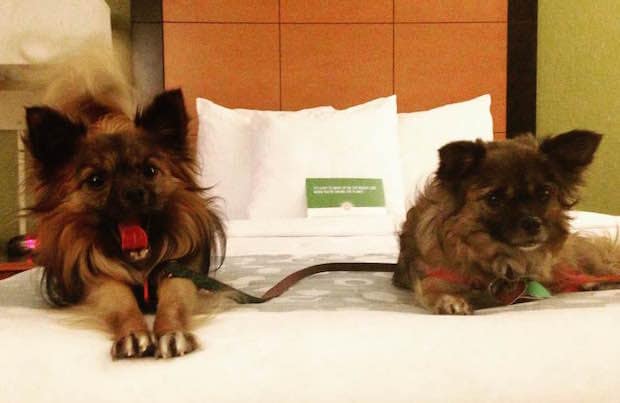
Home / BeInspired / Culture / 11 Things I Learned Driving Cross Country with My Pets
Two years ago this July, I set off on a cross-country road trip from Virginia to Arizona with my two dogs and car full of stuff. I spent four weeks on the road and logged more than 2,000 miles. As you might imagine, I learned plenty after taking a trip that long with my beloved long-haired Chihuahuas. It was daunting. I’d only taken on them one weekend getaway to prep. But you know what? The trip was, by far, one of the best things I’ve ever done. Sure, I thought about flying my dogs out with me. But there’s something that’s quintessentially American about a road trip and going West. And my dogs are my babies, and it wouldn’t have been the same trip without them. I had to bring them with me.
Looking back on it, if I had to tell myself one thing it would be this: slow down. Driving cross country is (probably) an adventure you’ll only make once in your lifetime. You never know when you’ll be back in Arkansas, Oklahoma or Texas. Give yourself permission to drive 300 miles out of your way to a tiny town in the Arkansas mountains that will end up being one of the coolest places you’ve ever been to. Let yourself drift. Believe it or not, once you get used to packing up everything, moving hotels and driving a few hundred miles every few days. Sure, you’ll be lonely and scared and tired, but when you’ve got your dogs with you, you’ll always have a friend.
Given the chance, I’d do this again in a heartbeat. Here’s what else I learned after a month on the road with my two Chis:
Take a Short Trip First
Before I went on a trip with my dogs, I took them around the block in their car seats. Those few short jaunts helped ease them into car travel. Before my 2,000-mile trip, I drove them from Virginia to Asheville, North Carolina. Much to my surprise, my dogs did well. It was their first time in the car and in a hotel room for a long period of time and they rocked it.
Contact the Hotel Before You Arrive

Make sure to research a hotel’s pet policies before you reserve the room. When you book, be sure to list in the comments that you’ll be bringing dogs and ask for a quiet room. Some hotels will put all the dogs in one hallway.
I discovered this at 3 a.m. one night in Winslow, Arizona, when just about every dog staying over started barking at once. It was funny, but draining since I didn’t sleep well at all. I ended up staying another night in my next destination, Flagstaff, so I could catch up on sleep.
If you’re going to leave the room, try turning on the radio or the TV on with the volume up. Put your dogs in the bathroom if you’re worried about them having accidents. One thing’s for sure: it’s always fun returning to them in the room. My boy dog, Rocket, was always happily perched on chairs waiting for me. Rocket is more rambunctious than my girl dog, Autumn, which made getting into the hotel a somewhat complicated process.
Prepare for Easy Packing and Unpacking
When I checked into hotels, I’d hold Autumn in my arms and keep Rocket in a traveling case so he didn’t act up. I eventually consolidated everything I needed so I’d only have to make two trips to retrieve my dogs’ supplies and then my luggage. When you’re making a number of stops along the way, just bring in the essentials that your pet will need: dog treats , dog food and bowls. I’d only drag their beds up the stairs if I’d be leaving them unattended for an extended period of time or if we’d be in the hotel for multiple nights. Otherwise, it wasn’t worth the effort.
Ask Hotel Staff About Where to Take Walks
Some of my favorite memories of the trip? Walking with my dogs in Santa Fe to see the sunset from a local park. The hotel staff recommended the spot and I couldn’t not have loved it more. One perk of traveling with your dogs is that you’re guaranteed to check out new places when you walk them. I loved finding tiny little parks all over Santa Fe and seeing all the adobe buildings surrounding the hotel.
Roll with the Unexpected Surprises
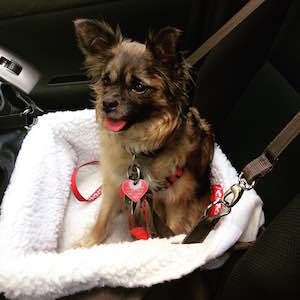
Any wayward traveler will tell you this: your most beloved memories will be the most surprising.
I booked the cheapest pet-friendly hotel in Sedona on a whim, and it ended up providing me with one of the most gorgeous views of that city’s famed red rocks. I loved walking with my two dogs on a nearby trail by one of Sedona’s energy vortexes.
Get Ready to Know Your Dogs Better Than Ever
I was impressed by how well my dogs handled the trip. I was so afraid they would run away and be impossibly stressed out, but they were fine. Before I left, I posted on a Chihuahua Mamas Facebook group I’m part of and asked everyone for advice about moving. Someone commented that Chihuahuas just need to be with their person and they’ll thrive. This proved to be true over and over again.
Before my trip, I never really thought of myself as spontaneous, but after the trip, I realized just how rewarding traveling to a new place on a whim can be—like the time I pulled over so me and my dogs could check out the Natural Bridge of Arkansas. Spending so much time together made me realize how much I could really trust my dogs.
Take Rest Days
Constantly heading from one destination to another was stressful for both myself and the dogs, so having rest days gave us a chance to reconnect and catch up on some much-needed sleep. My dogs loved staying in one place, even if it was just for one night.
During the Day, Truck Stops Are the Best
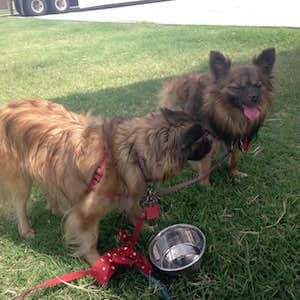
To prevent yourself from tiring out from driving, force yourself to rest. Take a minimum of 30-minute breaks when you stop for gas. Give yourself time to unwind since driving and traveling is exhausting.
As long as it’s during the day, truck stops are best. There’s usually plenty of green space where your dog can roam. Give them water and a walk. At night, I’d stick to gas stations due to safety concerns.
Drive-Thrus are You New Best Friend
I visited more Sonics on my road trip than I ever have in my entire life. It’s easy to pull in, order food and then enjoy it with your dogs beside you. A clerk at a Wendy’s I visited loved seeing my two dogs in the car with me when I ordered chicken for them and I even got some free dog treats from a drive-thru coffee shop in Amarillo, Texas.
Yes, You Can Even Bring “Difficult” Dogs Places
My biggest takeaway? Even hyper dogs, like my two Chihuahuas (who are very territorial and can be tough to bring to new places), can travel. Before this massive trip, I never really took them anywhere except for the vet and on walks around my neighborhood. But now, I’ve got the confidence to bring them more places. They come with me on most trips. Once you’ve spent an entire month on the road with your two dogs, a single overnight trip seems simple.
Above all, remember to have fun. I couldn’t have imagined completely uprooting myself without my two dogs. They’re my family. And the trip wouldn’t have been the same without both of them by my side. I’d recommend it to anyone brave enough to make the journey.

Related Posts

The Best Dog-Friendly Coffee Shops in Each State

Flying With Pets: Pet Air Travel Guide and Pet-Friendly Airlines

The 50+ Best Dog-Friendly Pumpkin Patches in the U.S.
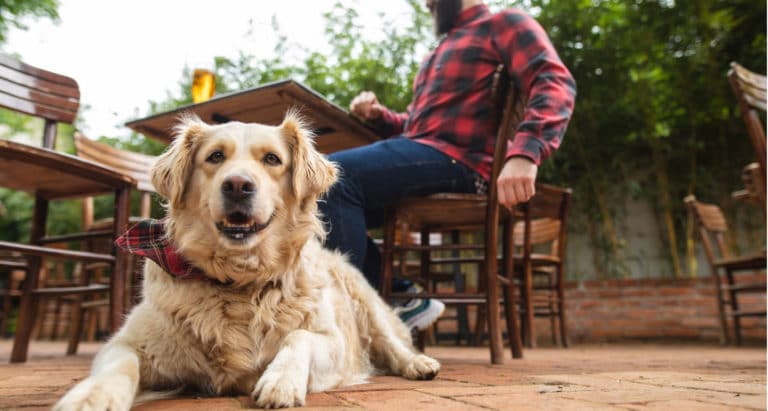
The 10 Best Dog-Friendly Breweries in the U.S. (and 100+ More Pup-Friendly Pubs)
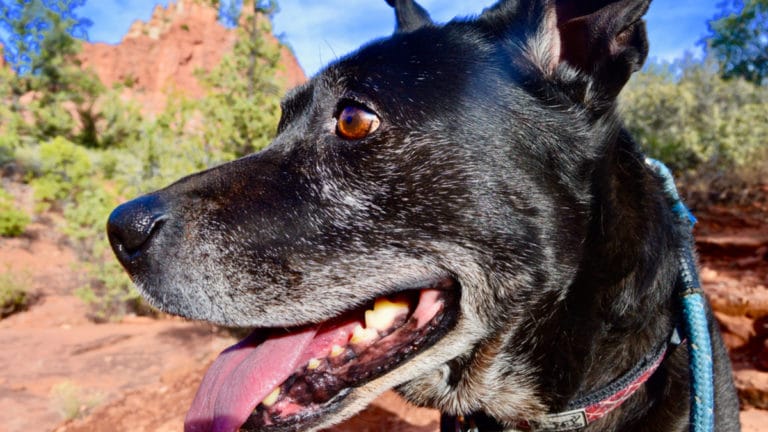
Best Places for a Vacation with Your Dog: Sedona, Arizona
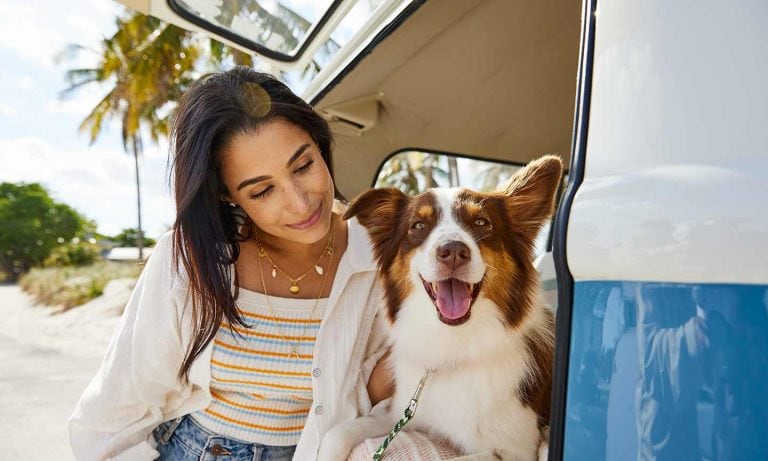
11 Tips for Surviving Road Trips With a Dog
- Health & Nutrition
- View all in be well
- Style & Decor
- View all in be home
- Get Answers
- View all in be smart
- People X Pets
- View all in be inspired
- Chewy Gives Back
- Shelters / Rescues
- View all in be generous
Most Popular

By: BeChewy Editors Updated: October 10, 2023
Learn what to feed a puppy at every stage in their development with this veterinarian-approved puppy feeding guide for new puppy parents.
More Details

By: Linda Rodgers Updated: October 13, 2023
Some plants can give your pup diarrhea, others are extremely poisonous and can cause serious problems.

By: Irith Bloom, CPDT-KSA Updated: October 10, 2023
Want to know how you can potty train your dog in 7 days? Follow along on one family’s potty training journey and learn how you can housetrain your dog, too.

- Mover Types
- Best Long Distance Moving Companies
- Best Interstate Moving Companies
- Best Cross-Country Moving Companies
- Best Out-of-State Moving Companies
- Best Cheap Moving Companies
- Moving Services
- Moving Quotes
- Moving Labor
- Local Movers
- Long Distance Movers
- International Movers
- Canadian Movers
- Office Movers
- Piano Movers
- Moving Company Reviews
- Allied Van Lines
- Mayflower Transit
- Colonial Van Lines
- National Van Lines
- North American Van Lines
- United Van Lines
- American Van Lines
- Bekins Moving
- Wheaton World Wide Moving
- Moving cost calculator
- Moving company directory
- Plan your move
- Should you tip?
- Moving insurance
- Move cross country
- Moving a mobile home
- Moving Container Reviews
- 1-800-PACK-RAT
- Zippy Shell
- What Is a Moving Container & How Does It Work?
- How to choose the right size moving container
- Professionals Movers or Moving Containers?
- What Not to Pack Inside Your Moving Container
- Truck Rental Reviews
- The Home Depot
- Enterprise Truck Rental
- Moving Labor Reviews
- Best Moving Labor Companies
- HireAHelper
- U-Haul Moving Help
- How to pack & load a moving truck
- What size truck should I get?
- Should you buy rental truck insurance?
- Should you hire moving help?
- Free moving boxes
- Storage Reviews
- Best Self-Storage Companies
- Public Storage
- Extra Space Storage
- LifeStorage
- Simply Self Storage
- Junk Removal Reviews
- Best Junk Removal Companies
- 1-800-GOT-JUNK?
- College HUNKS Hauling Junk
- Waste Management
- Guide to renting a storage unit
- Organizing a storage unit
- How much does it cost to rent a storage unit?
- Items that require climate controlled storage
- How does junk removal work
- Free donation pickup
- Car Shipping Reviews
- Best Car Shipping Companies
- AmeriFreight
- How Much Does It Cost to Ship a Car?
- How to Transport a Car to Another State
- Preparing Your Vehicle for Auto Transport
- Before You Rent a Car Trailer: Cost and Tips
- Moving Cost Calculator
- Packing Calculator
- Move Planner
- Mortgage Calculators
- Moving Announcements
- Guides & Advice
- Moving Articles
- School Ratings
- City Profile
- Compare Cities
- Daily Market Commentary
- Edit My Account
- Moving Cross Country With Pets: Vital Tips to Remember >
Moving Cross Country With Pets: Vital Tips to Remember
Share this:

Moving cross country can be stressful for all members of the family—including your pets. Animals are very intuitive, so they can often be sensitive to change. As soon as the suitcases come out, your pets might become excited, anxious, or needy.
Since you are dealing with a lot of change yourself, reassuring your pets during a move might be a challenge. And if you’re moving cross country, the long trip adds yet another layer of complexity. This means our pets can become a lower priority.
But, just like any other member of the family, it’s important to think of where your pets fit into the move. Regardless of how your pets will make the interstate move , you will need some time to prepare.
We’ve put together some expert tips on moving cross country with pets. We’ll discuss the most common pets — cats and dogs — but also touch on less common pets, too. Need a timeline to stick to in the meantime? Check out our moving with pets checklist .
Visit Your Vet, First and Foremost
While it might seem like a no-brainer, your vet’s office should be your first stop. Before you move, you need to assess your pet’s health and make sure he or she is up to date on annual vaccinations. It’s also a good time to grab all of your pet’s records and order any necessary medications. Remember that these medications will need to hold you over until you establish a relationship with a vet in your new city or town. These medications may include heartworm prevention, NSAIDs, anti-anxiety, and any other medicine needed by your cat or dog.
If you are flying with your pet, be aware that most states require a signed health certificate and updated rabies vaccinations in order for your pet to board the plane. It’s also recommended that you have a veterinarian implant an identification chip in your pet before leaving if you haven’t already. In addition to updated shot records, many airlines now require these chips.
Check the Local Laws and Regulations
If you are moving to another state, check its requirements for the import of animals. The Animal and Plant Health Inspection Service section of the U.S. Department of Agriculture’s website offers links to pet regulations for individual states. You can also ask your landlord or Realtor about any rules and requirements specific to your new home.
State regulations are generally similar, except for Hawaii, which requires pets to be quarantined for up to 120 days. Some animals, like exotic animals or domesticated livestock, may have additional requirements, quarantine periods, or paperwork. Also, some communities ban certain dog breeds or set limits on the number of pets in a household. Do your homework on these ordinances before moving cross country with pets.
Check Your Pet’s ID Tag
Checking your pet’s ID tag is an important next step when preparing for a big move. Pets upended from their normal routine are usually confused and anxious and may bolt. So, it’s crucial to update their ID tags with your new information.
For those who have never made a pet tag, include your name, phone number, and address. You can also add your name and your pet’s chip number. Some states also require your pet to wear a separate rabies tag on their collars, which you can get from your vet after annual vaccinations.
Pack an Essentials Bag For Your Pet
Just like you would pack an essentials bag for yourself, pack your pet’s necessities in a bag you can easily access during your move . It should include bowls, food, treats, medications, a leash or harness, a litter box and scooper for cats, elimination bags for dogs, toys, and blankets — anything your pet uses regularly. If your pet is a nervous traveler, consider having a recent photo of your pet in case your pet gets lost.
Take the opportunity to clean your pet’s belongings before packing them up. Beds, toys, and dishes can get pretty gross with heavy use. You don’t want to be unpacking dirty items in your new, clean home.
Let Your Movers Know You Have a Pet
Although moving companies are not allowed to transport pets, let them know that you’ll be moving with one when you book their services. On moving day, your pet should be sequestered or elsewhere—like being watched by a friend or neighbor. Use crates or gates to contain your pets in one area of the house if you’re not hiring a pet sitter. Open doors and windows make it easy for a pet to get loose, so be sure the movers are aware of your animal’s safety needs at the beginning of the day.
Moving day itself is the trickiest to manage with pets, and it’s often the most stressful, too. Pets can pick up on the energy of their humans. Do your best to remain calm and accommodate them in the ways that you can. Considering hiring a pet transportation company? Don’t forget to ask your movers if they work with you or can recommend one.
If You’re Selling Your Home, Have a Pet Plan for Open Houses
If you’re selling your home before a move, you’ll have some extra steps to take in regard to your pet. Selling a home when you have a pet is a lot to take on. Specifically, you should have a game plan for keeping them relaxed or out of the house during open houses and showings.
Talk to family members, friends, or neighbors. You can see if one of them can take on this responsibility when necessary. Also, consider arranging a plan with your local vet. If all else fails, find some way to contain them that doesn’t disrupt the showing.
Transfer to a New Veterinarian
Moving cross country with pets is never easy. But it’s best to avoid any gaps in your pet’s health coverage. To evade any lapses, find a new vet before your move. Start the process of switching to a new vet office by talking to your current vet and letting them know you’re moving. They may be able to recommend a vet in your new location.
Your current vet can also give you guidance on how to transfer their records. As soon as you decide on a new vet, call and make sure they’re accepting new clients, then ask what’s required of you. You may need to set up an initial visit before the official transfer.
Consider Driving, Not Flying
Driving is usually the preferred option when moving cross country with pets for a couple of major reasons. First of all, driving allows your pet to stay in a more controlled and familiar environment with their loved ones. Second, it means that you can take breaks as needed.
Prepare accordingly and purchase a restraint option, like a harness seatbelt. Then, keep the interior comfortable with your pet’s favorite blanket or toy. Feeding times and treats should also be thoughtfully planned to avoid an upset tummy.
Figure Out Your Restraint Option for the Car
In the prior section, we mentioned restraint options. These are important when moving cross country with pets in your own car. First, you need to decide if your pet will be in a crate or carrier. If it’s new, familiarize your pet with his or her crate or carrier in advance.
While a sturdy container is preferable, you also have the option of harness seat belts, zipline harnesses, and backseat hammocks. Make your decision based on the types and number of pets you have.
If Flying, Know Your Airline’s Pet Policies
Even though flying is quicker, it has more restrictions and requires a lot of due diligence and planning. Whether your pet will be flying in-cabin or as cargo, it’s important to check your airline’s policies. Then, try to book a flight without any stopovers or transfers.
Make an in-cabin reservation for your pet, if at all possible, as flying cargo can be very stressful for an animal. And keep in mind that the Animal Welfare Act prohibits all air transportation of puppies and kittens less than eight weeks old and prior to weaning, whether accompanied or unaccompanied.
Consider a Pet Transport Service
Pet shipping services can be very useful in getting your animal companion to a new destination. They help with booking travel accommodations, paperwork, and coordination en route (feeding, scheduling bathroom breaks, administering meds, and so on). They aren’t cheap, but if you’re moving cross country, it might be worth it for everyone’s peace of mind, including your cat or dog .
It’s fewer tasks for you to manage while on the road, and, if you’re taking breaks overnight, you won’t have to worry about finding a pet-friendly hotel. If you’re flying, you won’t have to concern yourself with your pet if you encounter layovers or a canceled flight. Please note that you should only work with a pet transportation company that is USDA certified and supported by real veterinarians. Look at online reviews, and plan to do some back-and-forth communication to get comfortable with the idea that this company will be responsible for your pet’s safe travels.
Make the Crate or the Carrier a Happy Place
If your pet isn’t used to the crate (dogs) or a carrier (cats and dogs), a month before the move is a good time to start training them. After all, if you’re driving, they will be spending a lot of time in their container. For many cats and dogs, a crate or a carrier is associated with stressful travel, vet visits, and other unpleasant memories. Unfortunately, using a container to restrain them during travel is for their own safety, so it’s a necessary step for moving cross country with pets.
To minimize the unpleasantness, casually introduce a crate or a carrier to your pet by setting it up in the room where they sleep or hang out the most. Leave the door open and put some toys, treats, and maybe a favorite blanket inside of it. Your pet will have time to get used to the sight of the container and can explore it on his or her terms. Spray the carrier or crate with some calming pheromone spray that you can use during the move, too. Encourage your pet to spend some time in the carrier or crate, and praise them lavishly when they do. You can also make it part of playtime or feedings.
Don’t Give Your Pet Food Right Before Traveling
Those moving cross country with pets should avoid feeding them solid food several hours before the travel begins . Cats, in particular, are prone to vomiting and esophageal problems. Dogs, when anxious and/or experiencing motion sickness, also tend to have stomach issues while traveling.
Be sure to strategically plan your pet’s meals when moving to avoid dealing with unexpected surprises while on the road. And try not to use new food before hitting the road, either — as it might make their stomach problems even worse.
Try To Avoid Sedation
Talk to your vet about other options than sedation to help with anxiety during your travels. Most vets advise against sedation for air travel since it can interfere with an animal’s ability to breathe on the plane. You also don’t know how your pet will react to the medication.
Sure, driving cross country can be also stressful for your pet, but it’s a friendlier, quieter, and overall more controlled environment, so if you can use other methods of anxiety reduction, such as a ThunderShirt, then skip the sedation. A cross-country road trip might also be a safer option for short-nosed breeds, such as Pugs, French Bulldogs, and Persian cats, as they are already prone to respiratory challenges.
Look For Signs of Motion Sickness
If you witness excessive drooling, throwing up, or hyperventilating, those may be the signs of your pet experiencing motion sickness. Don’t restrict your pet’s water consumption, but take a break from your feeding schedule and see how they do afterward.
Also, keeping the windows open in your car might help. If you know that your pet’s motion sickness is severe, talk to your vet about medication options ahead of time.
Pet-proof Your New Home
Just like in your old home, make sure any household hazards in the new house and the yard are removed from your pet’s reach. Since you have a pet, you most likely know what to do already, but let’s break it down a bit.
Start with getting rid of any plants poisonous to pets, locking away your cleaning supplies and hazardous materials — like pesticides and antifreeze — and securing the window screens and the yard fence. Then, you can remove any items your pet might try to chew or swallow. Make sure to supervise their time in the yard at first to make sure they can’t get out using any holes or gaps in the fence line.
Help Your Pet Settle In
You’ve made it! You’ve moved into your new home. There’s a lot to do, but don’t forget to make room for your pet’s adjustment needs. Most pets need time to get used to their new surroundings, and that’s normal. Set up a special space that they can call their own by placing their bed, toys, and a fresh bowl of water there. If you have a dog, give him or her lots of opportunities for getting out excess energy through walks or time spent outdoors. That way, you’ll be exploring a new neighborhood and getting some exercise together.
Cats might take longer to adjust , as they’re territorial creatures stuck to their routines. Settling into a new home can come with stress, fear, or anxiety, especially if your new home had previous kitty residents that left their smell behind. Keep your cat’s routine steady and consider keeping them in one room for a day or two, with his or her food, bed, toys, and a litter box. Visit your kitty often and try to pick a room with a window for some light and entertainment. Then, you can open the door and gently invite your cat to explore the rest of his or her new home. Your cat can roam on their terms, and that should help alleviate stress in a new environment.
That said, if your pet is displaying serious behavioral changes, like loss of appetite, aggression, or improper bathroom habits, consider consulting your new vet on how to deal with these challenges.
Road Trip Safety Tips
There are a few things you can do (or not do) to prevent your pet from getting lost or injured during your cross country move. It will also keep the humans around your pet safe, and your pet feel more comfortable in general.
- Make stops at regular intervals to give your pet some water and have a bathroom break. Most dogs also will need a short run to expel energy. Rest areas along the highways make good stopping spots.
- Always restrain your pet outside the car on a leash or a harness. Cats can stay in their carriers. If you let your pet loose in a strange place, they might panic and run off, so keep an eye on them at all times.
- Attach the leash before opening the car door and detach it after the pet is back inside and the door is fully closed.
- If you must leave your pet in the car, and it’s hot outside, park in the shade and open your windows a couple of inches for ventilation. Try to make your absence as short as possible.
- Keep the windows rolled up enough to prevent your pet from jumping or falling out of the car.
- Always walk your dog on a leash and obey all signs to stay off the grass, etc.
- Avoid manicured lawns, swimming pool areas, and people’s or hotel gardens when walking your dog.
- Keep your dog on a short leash in hotel/motel lobbies and any public places.
- Keep strangers at a distance, especially if your pet is nervous around new people.
- Try not to leave your pet alone in a hotel or motel room unrestrained or for long. He or she might make noise and disturb others, chew on things, go to the bathroom somewhere in the room, or even escape.
Moving Cross Country With Less Common Pets
We’ve covered moving cross country with dogs and cats, but maybe, you’re relocating with another type of pet or domestic animal. Always do lots of research on how to move with your specific animal, talk to your vet, and follow these quick tips to take the guesswork out of the process.
Moving Cross Country With a Horse
There’s a lot to consider when moving with a horse or multiple horses :
- A pre-trip visit with an equine veterinarian is a must, as are thorough travel plans and insurance.
- Have the paddock and pasture ready to go at your new home before transporting your horse there, including any fencing.
- You may need to schedule a Coggins test, which is required before your horse can be transported with other horses.
- Horses can get seriously stressed during a move. Start working on stress reduction techniques months in advance to help your horse cope.
- Moving a horse can be expensive, so leave room in your moving budget for transport, insurance, and other incidentals.
Moving Cross Country With Chickens
As with all animals, you’ll need to do some planning before you transport chickens to your new home :
- Look into local laws since many residential areas have restrictions or limitations on owning backyard chickens.
- Move your flock at night, when they’re more likely to be relaxed and dormant.
- If your chickens have to share crates, be deliberate about who shares space with whom — you don’t want anyone getting angry on the road. Aggressive chickens should always be crated alone.
- Minimize stops as much as possible. The sooner you can get to your destination, the better for your flock.
- If your coop isn’t quite ready at your new home, set up a safe temporary space in your garage to house your flock for a day or two until the coop is prepped for move-in.
Moving Cross Country With Birds
Birds are sensitive to changes in their environment, so moving cross country with a pet bird does require some forethought:
- Have a health check performed before the move, and if you’re moving to a new state, see if you’ll need to provide a health certificate.
- A big change, like a move, can cause your bird to have intestinal issues. Stock up on at least a month’s worth of their usual food before moving, so you know for a fact you’ll have it available as they adjust.
- The car is usually the preferred means of transport for a bird. Secure their carrier in the back, and bring along refreshing treats, such as cucumber and citrus, to keep them hydrated and content on the road.
- If you have no choice but to fly, plan for how you’ll get through security with your bird. You may need to remove them from the carrier, so have them in an avian harness in case they get scared.
- Not all airlines accept birds. In a situation where you’re moving long-distance but have to go by car, be sure to research bird-friendly hotels in advance, or plan to drive straight through without stopping, as long as it’s feasible.
- Keep an eye out for changes to their feathers, appetite, and behavior, as birds can become very stressed out during a move.
Moving Cross Country With Fish
While fish don’t get as stressed out as some other pets, they definitely know something is up and are vulnerable to any changes in their environment. Here’s what we recommend:
- Scoop them in a five-gallon container with their aquarium water.
- Contact an aquatic veterinarian to help you determine if you need to add any supplements to the water for the trip.
- Keep their environment dark and cool.
- Make the move as quickly as possible.
- Unpack and set up the aquarium as soon as you can after you arrive at your new home.
- Test the water before you release the fish into their aquarium to make sure it’s similar to what they’re accustomed to.
Moving Cross Country With a Reptile
Reptiles can be transported via car or airline, but air travel is hard on them, so if you can swing a car trip instead, it’s preferable. Here’s what else you should know:
- Like cats and dogs, reptiles also require a signed health certificate no more than 10 days before traveling.
- Some states restrict the importation of pets, especially reptiles and amphibians, so it is crucial to know the particular rules of the state and city to which you are moving.
- Stress is hard on any pet, but reptiles are especially susceptible to health issues. Let your pet spend time in the carrier to get used to it before the move.
- Make sure your pet is in a safe location before the moving company arrives.
- Keeping your reptile or amphibian at a comfortable temperature will be the biggest challenge when traveling, whether by airline or car. Make sure to take precautions and add cooling or heating elements to their carrier depending on the time of year and temperatures.
- Your pet will be stressed and may act differently, so be extra cautious if you need to remove the pet from its carrier.
- Make sure to check with the airline on their varying rules and regulations for reptile transport. Most airlines will take reptiles but only as cargo. This will be more expensive than shipping, and it might be less stressful for your pet.
- Try to keep stops to a minimum. The sooner you can get your pet to the destination and back to its normal routine, the better for its physical and mental health. If you will require overnight stays, plan ahead to select lodging that allows reptiles.
FAQs About Moving Cross Country With Pets
How do i start preparing to move across the country with my dog.
A veterinarian should be your first stop to assess your dog’s health and make sure he or she is up to date on shots. It’s also a good time to get all of your pet’s records from your vet and order all necessary meds. If you are flying with your dog, be aware that airlines and most states require a signed health certificate and updated rabies vaccinations. It’s also recommended that you have a veterinarian implant an identification chip in your dog prior to the move if you haven’t already.
How do I safely transport my pet across the country in my car?
Your options include a crate, a carrier, or a harness that could be securely attached to the seatbelt buckle in your vehicle. Allowing your pet to roam freely in the car is not a good idea. And, since it’s a long trip, make sure your pet gets bathroom breaks, water, and a chance to stretch their legs.
What should be in the essentials bag for my cat when I move cross country by car?
Just like you would pack an essentials bag for you and the members of your family, pack your cat’s necessities separately. It should include water, food, bowls, treats, medications, a litter box, a scooper, litter, grooming supplies, toys, and blankets — anything your cat uses regularly and will need on the road and in the first few days at the new house.
Is it better to fly or drive to move across the country with my cat (or other pet)?
Driving with cats (or other pets) is usually the preferred option when you moving cross country with a pet for a couple of major reasons. Driving will allow your cat to stay in a more controlled and familiar environment. It also means that you can take breaks as needed. While flying is quicker, it has more restrictions and requires a lot of due diligence and planning. It’s also noisier and disruptive, which can be stressful for your kitty, especially if he or she is already a nervous traveler.
Remember, soon your cross country move will be over, and you and your pet will be happily settling into your new home. With some prep, time, love, and patience, you can do this! Ready for your cross country move? When looking for the best moving company , refer to Moving.com’s guide to the best cross-country moving companies and our extensive network of reputable and reliable movers . Good luck, and happy moving!
Related Articles:
- Moving With Cats Cross Country: Tips and Advice
- How to Transfer Your Pet to a New Veterinarian After a Move
- Moving with a Cat: Tips for Making it Less Stressful
- The Beginner’s 45 Step Guide for Moving Cross Country
- Moving With Kids? Here are Our Top Tips to Make the Process Easier
- Tips for Turning a Cross Country Move Into a Fun Road Trip
- 25 Packing Tips for Cross Country Moving
- No Horsing Around: Tips on How to Move a Horse
- How to Choose the Right Pet Crate for a Move
- Pet Shipping Service: Here’s What You Need to Know
Author: Tatyana Meshcheryakova
Tatyana has been creating content for almost three decades. She has a background in journalism, publishing and marketing, and has written about numerous topics ranging from real estate and home improvement to city guides, travel, and pop culture. As a new homeowner in New Orleans, she is learning a thing or two about home improvement and decorating firsthand. Tatyana is no stranger to moving, too. She has left her native Ukraine at 16, moving to Philadelphia and then to New Orleans, all the while traveling extensively within the U.S. as well as in Europe and South America. View all posts by Tatyana Meshcheryakova
- Mudanzas (Spanish)
- Do not Sell My Information
- Join our Network
- Client Login
- Accessibility
- Privacy Notice
- Terms of Use
- Review Guidelines
Move, Inc. Sites
- realtor.com ®
- SeniorHousingNet.com

Our Pet Experts
The survival guide to traveling cross-country with your cats.
by Kim Campbell Thornton
Published on March 14, 2016
Safety First
When nature calls, exercise on the road.
- How People Who Travel With Cats Pull It Off
- Teach Your Cat to “Stay” On Command — Really!
- 10 Strange Cat Behaviors Explained
- Pet Travel Trends: New Laws, Transportation Options and More
- Car Travel With Cats: What You Should Know
Related articles
Dr. marty becker's top 30 pet products of 2011, 5 small dog breeds this vet would like to see more of, meet the 4 cat burglar breeds who like to swipe your stuff, top 10 holiday pet pics, intestinal parasites: the squirm-worthy side of living with dogs, teach your dog to sit when you stop.

I Survive a Cross-Country Road Trips By Making My Car Feel Like Home
A fter doing it six times in three years, my dog and I have become experts in figuring out what we need to be happy when on the move.
When asked "have you ever driven cross country?" many people may say sure, once or twice. You may have either embarked on a chaotic, stressful drive in a packed U-Haul with a screaming cat or hit a bunch of national parks on a meandering road trip, but is there really anyone who—truck drivers and van lifers excluded—is insane enough to make that coast-to-coast trip routine?
Well, yes, and that person is me. For each of the past three years, I have headed west for the winter from my home in upstate New York. The tradition began out of a bit of cabin fever, literally: in the fall of 2021, the world was creaking open but I was still living in my peaceful, lovely, but very rural home. I did not long to return to Brooklyn, nor did I particularly long to uproot my life and move to the West Coast. Instead, I wanted to live what so many of us aspire to—the bicoastal dream, for as long as I could get away with it. I am also a big skier. Driving west meant I could hit mountains in several different states. I could visit friends and family across California. And, perhaps most importantly, I could bring my 70-pound dog, Basa.
Now, as spring arrives in Los Angeles and I am about to drive cross country for the sixth time in three years, and the eighth overall, I feel equipped to say that those 20,000 miles have made me, if not an expert, than uniquely well-versed in both the practical and philosophical tools needed to make the journey safely, how to live out of your car for several weeks without losing it (your mind, or the car), and how to do all of this with a faithful canine companion.
You need to be organized (or at least try to be)
Despite decades of a desperate desire to be more organized, and a classic flirtation with a possible late-in-life ADHD diagnosis, my natural state tends towards outward disorder: I am responsible but messy. I always begin my trips with an organizational system that inevitably falls apart by the end, but beginning with one ensures it will take longer to fully unravel.
I don’t drive an SUV or even a Subaru, but a Prius, so space is at a premium. Hatchbacks are generally more versatile than sedans, but the ability to fold the seats down is moot when your dog gets a nice little " hammock " all across the backseat to herself (How nice for her! Her travel bed also rolls up easily.)
Luckily there are a lot more places you can stow your gear than just the trunk: the narrow space underneath the two front seats are my "library," where I stack my books. I slot anything small enough between the front seats and the backseat: a bin with toiletry refills, a bag of cleaning supplies (all purpose cleaner, dishtowels, a designated towel for Basa on the days she decides to take a dip in the muddy Rio Grande).
In the front passenger seat is my cooler, which gives me easy access to La Croix and snacks on a long driving day. In the console I store essentials I need easy access to while driving: Tums, ibuprofen, hand cream and gum, so I don’t just snack mindlessly when I’m bored. I am begging car manufacturers please stop competing to create bigger and bigger touch screens using awful proprietary software and to please just build in a sturdy phone mount because every one I’ve bought has been completely mediocre, so much so that I won’t even link to the one I currently have. I would say that those that slot into the radiator seem sturdier than the dash mounted or magnet ones, although that of course comes with the side effect of blocking air flow.
Soft-sided suitcases are generally the move when you’re trying to force a lot of luggage into a small space. I allow myself to bring one bag into the hotel every night: The Patagonia Black Hole 55 , a duffel with backpack straps that has plenty of room for my overpacking and toiletries and laptops and cords and three books from the "library" that will never get read. A larger duffel gets stowed in the very back of the trunk, with everything I don’t need for the road-rat segment of my journey: nice clothes, heels, any remotely restricting pants. I have a separate smaller bag for Basa’s bowls and food and, with luck, these two bags are all that end up with me in the hotel room. This also reduces my opportunity to accidentally leave things behind. "Upstairs" is my cargo box, which stores all my ski, camping and sporting gear.
When I first decided to head cross country, I knew that there was no way the Prius itself would fit all of my important cargo! (read: crap). But cargo boxes are shockingly expensive when bought new, especially considering that they seem to mostly be made of plastic. Thule and Yakima are the two brands that generally crop up as the best in the business; I bought my Yakima second-hand from a woman who left Northern California for Connecticut because her son had asthma and couldn’t handle the wildfire smoke. Delightful! And despite the fact that every time I unlock it, it feels like it is going to snap, the big plastic box has worked without fail for three years and counting.
Absolute necessities or game changers are a hand vac , for when you inevitably spill a bag of kibble in the backseat, a trash can ; air tags or tiles for your wallet, car keys and car itself; chains if you will be driving anywhere with elevation during the winter months, a physical road atlas and offline map downloaded on your phone, at least a gallon of water, and a handy portable car jumper . I know I’m jinxing myself here, but in my 20,000 cross country miles, I haven’t had a single flat tire or a single ticket (please clap), and though I’ve made three calls to AAA in the last year, every one of those incidents were due to me locking my keys in my car or my battery dying in my home driveway. Still, it is important to be prepared. These are not the trips to skimp on an oil change or, maybe more importantly, a tire rotation. Make sure your wipers are adequately wiping before you are hit with a torrential downpour in Iowa. Basically: think of any car maintenance the loudest man in your life has harassed you about that you’ve ignored and, in an unfortunate win for the patriarchy, do it.
Finally, though this tip might not apply to anyone who is preternaturally blessed with the ability to keep spaces clean and organized, I make sure to do a reorg at least twice on the trip. The deep clean comes when I get back home and wash the mats and seats and wipe down the doors, but an occasional sweep to grab errant socks (it’s always the socks) and throw away string cheese wrappers (it’s always the string cheese) goes a long way.
The dog of it all
The real road warrior on these trips is Basa, who has logged every single one of those miles with me, sleeping in tents and tiny homes and Motel 6’s and Best Western Pluses. Basa’s presence is at once the reason for the long drives—I have no interest in faking a service dog certification to fly with her, nor should you —and another logistical hurdle.
I book almost all of my hotel rooms with points and then pay for the pet fees. Though several chains are pet friendly, fees will vary widely: from Pets-stay-free (rarer now, but Kimpton for the spenders and and Motel 6 for the thrifty) to almost as much as the cost of the hotel room (I’ve seen as much as $150 per night). I’ve had good luck with low fees at Best Western’s, La Quintas, and Holiday Inns, but many of these chains are franchised, which means the quality of individual hotels will vary widely. I had one of the most haunting hotel stays of my life at a La Quinta in Ohio, and a near-flawless stay at a La Quinta in Utah, save for Fox News blaring in the breakfast room. A Nebraskan Best Western Plus with an Applebees in the lobby almost made me give up on the yearly schlep entirely, but a Best Western Plus in Utah helped me find the light.
With a few exceptions, most national parks restrict pet access on all but paved roads, campsites, and small trails near the visitor center. Please do not ignore those rules, which exist for a reason, namely that pets can be a disturbance to wildlife. But the beauty of the natural world is that it doesn’t follow man made borders: rarely do the sublime vistas and stunning views make a hard stop at the edge of a national park. Usually, there’s an equally-beautiful state park or national forest nearby, both of which are likely to be less crowded and more pet friendly.
If Basa has one flaw (impossible to imagine) it’s her sometimes mediocre, sometimes awful recall; a treat will never be as appealing to her as treeing a squirrel, which I find, depending on the day, at turns endearing and deeply annoying. That, coupled with varying leash rules on trails at various national parks have made an investment in several biothane leashes a game changer.
Sure, retractable leashes are a great option when used appropriately, and a safety nightmare most of the time. Biothane acts like a synthetic leather: when it inevitably gets muddy, it can be wiped or washed clean, knots are easier to remove than in nylon and it is less likely to cause you rope burn. It doesn’t seem to have caught on with many major brands yet, but several Etsy shops make these leashes in varying length, buckle type, and color. I have a 15 and 30 foot leash. Sometimes I hold the looped end, but often I let Basa drag it behind her.
Basa is also a secret weapon, my solace. She forces me to stretch my legs and helps me find walking trails I never would have; she’s a conversation starter on a bar patio in an overpriced ski town. Though I can’t think of a time when I felt my personal safety was threatened while traveling on my own, I admit she might act as a deterrent, even i f the reality is that, if someone actually threatened me, she would probably just ask for a belly rub. She’s by my side, in countless hotel rooms and on cold mornings when I wake before dawn and take a pre-dawn stroll through small town Nebraska.
Accept that things will go wrong
Last year, I had a relatively short day of driving, through Rabbits Ears Pass, as a snowstorm was percolating over the mountains. When I checked the weather, the snowfall looked mild and chain restrictions were not in effect. When I got on the pass, the conditions quickly turned to white out. We crawled along at 5 miles an hour, and I had to tailgate close to the headlights of the car in front of me, because if that car disappeared from sight, I would have no idea where the road was. Basa, cranky that she couldn’t stick her head out the window in the middle of a blizzard, panted in the backseat.
Something about my psyche allowed me to shake off that experience by the time I pulled back onto the main highway, while forgetting my laptop in an Airbnb in Houston left me rattled for days.
For whatever reason you’re making the drive, whether or not you like transience or just need to get to your destination, a days or weeks long road trip is not easy on the body or the mind. Different things will set different people off: I generally keep calm in crisis and spiral out about the little things, because the little things feel more like a reflection on me and what I should be able to control. It’s hard to not be hard on yourself when you feel like you should just be grateful for the adventure you’re having. But this will not keep you safe, nor will it help you feel better. What helps, no matter the incident, is what therapists have unfortunately been telling you and me and us for years: slow down, take a breath. Take a day off if you need. Don’t get back on the road if you’re out of sorts. Take a look at what the land around you has to offer. The road will still be there tomorrow.
Top photo by Alexander Spatari/Getty Images
We love the products we feature and hope you do, too. If you buy something through a link on the site, we may earn an affiliate commission.
Related Reading:
The New Living Vehicle Micro Home Is an Off-Grid Dream Come True
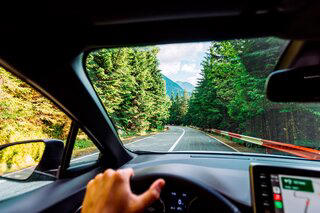
Advertiser Disclosure
Many of the credit card offers that appear on this site are from credit card companies from which we receive financial compensation. This compensation may impact how and where products appear on this site (including, for example, the order in which they appear). However, the credit card information that we publish has been written and evaluated by experts who know these products inside out. We only recommend products we either use ourselves or endorse. This site does not include all credit card companies or all available credit card offers that are on the market. See our advertising policy here where we list advertisers that we work with, and how we make money. You can also review our credit card rating methodology .
The Ultimate Guide to Traveling with Pets on Trains within the U.S.
Amar Hussain
Senior Content Contributor
764 Published Articles
Countries Visited: 63 U.S. States Visited: 9
Keri Stooksbury
Editor-in-Chief
29 Published Articles 3077 Edited Articles
Countries Visited: 45 U.S. States Visited: 28
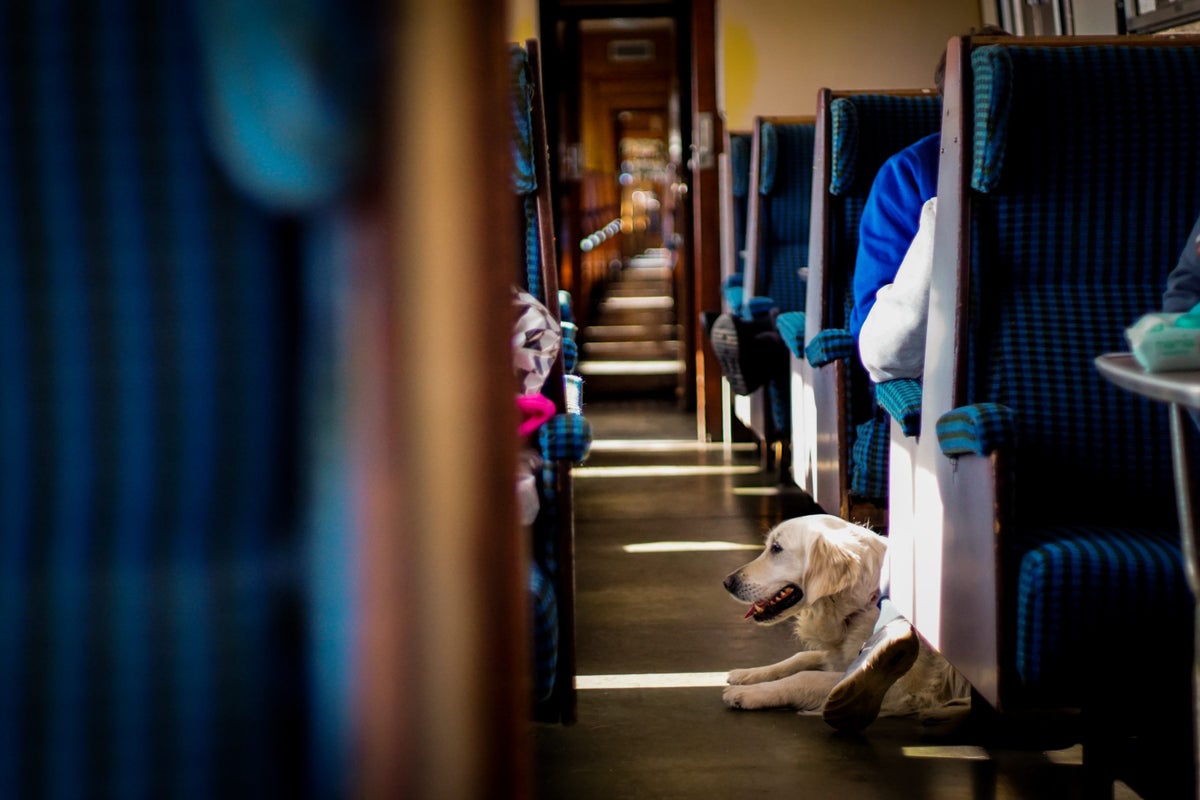
Motion Sickness
Heath and documentation requirements, pet identification, nearest vet, relief breaks, checklist for what to take on board, mainline routes where pets are not permitted, paperwork and health requirements, booking procedure, train systems that allow pets, weight of the carrier and your pet, ventilation, what about large pets, final thoughts.
We may be compensated when you click on product links, such as credit cards, from one or more of our advertising partners. Terms apply to the offers below. See our Advertising Policy for more about our partners, how we make money, and our rating methodology. Opinions and recommendations are ours alone.
When planning your next trip within the U.S., you may not want to leave your 4-legged friend at home. Thankfully, with many train services now allowing small pets to be carried on board, there are alternative options to flying or driving.
Train travel can be much less stressful than flying for both pet and owner, with shorter check-in times and the comfort of having your pet on your lap for the entire journey, rather than under your seat or in the hold compartment.
There’s also the cost to consider, with the likes of Delta Air Lines and United charging from $125 to transport your pet as carry-on, versus Amtrak, where pets can be carried for just $26.
This helpful guide will help you plan for your trip and rounds-up the pet policies for each train operator listed by individual state.
This information relates to pets-only, not officially trained service dogs that are governed under the Americans with Disabilities Act and are permitted to go “where the public is normally allowed to go”.
Things to Consider Pre-Travel
To ensure the well-being of your faithful friend, and that you’re adhering to certain rules, there are some things to consider when planning to take your pet on board a train.
Like humans, some animals can get motion sickness, so it’s advisable to test out some short journeys before embarking on a 7-hour train ride. Be sure to have plenty of water with you to avoid your pet becoming dehydrated as this will only make the motion sickness worse.
As many train operators only permit small pets to be transported within a pet carrier, you’ll need to test out how your pet responds to being inside a cage for long periods.
Many train operators such as Amtrak state that the pet must not be disruptive, so train travel may not be suitable if you have a dog that barks continuously when in their pet carrier.
On local train services, documentation is not likely to be requested by train personnel; however, when using Amtrak services , passengers must sign to certify that their pet is up-to-date with their vaccinations.
To transport a pet between states, most states require that the pet have a recent Certificate of Veterinary Inspection (CVI), which indicates that the pet is clear of rabies and other infectious diseases. Each state has different rules as to when the certificate should be obtained before entering a state, but the most common time period is within 30 days before entry.
Although not mandatory in the U.S., you may want to consider getting your pet micro-chipped for their safety. If your pet became lost in an unknown destination, the likelihood of tracking them down would be far greater with a microchip. You should also make sure that they have a collar with your contact number.
Even if you’re only taking a short trip, it’s still wise to familiarize yourself with your nearest vet just in case they require urgent care while traveling.
If you’re traveling on a long train ride, then you’ll need to ensure there are sufficient relief breaks along your route. Check with the train operator to see if they have any scheduled stops that are more than just a couple of minutes so that you have time to relieve your pet in a suitable location.
- Vet contact details.
- Well-ventilated pet carrier.
- Collar and leash.
- Blankets/jacket if the journey is cold.
- Chew toys for inside their carrier.
- Snacks, food, and plenty of water.
- Food and drink bowls.
- Certificate of Veterinary Inspection (CVI).
Hot Tip: Keep all of your pet’s important items organized with a great dog travel bag .
Amtrak Pet Policy
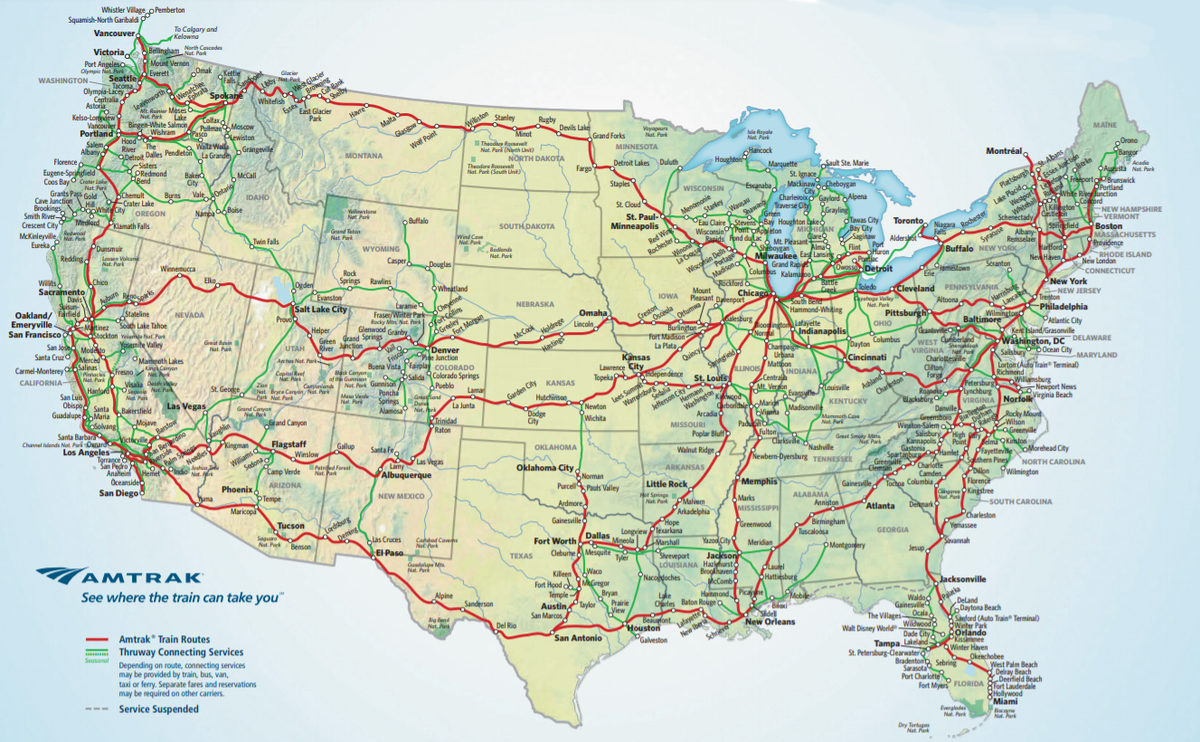
Amtrak permits passengers to bring dogs or cats (up to 20 pounds) onboard many of its train journeys that are 7 hours or less. Pets are not permitted on specific mainline routes or Thruway connecting services (green routes on the above map and detailed by state in the table below).

- Auto Train : Lorton, VA (Washington, DC) – Sanford, FL (Orlando)
- Capital Corridor : Auburn – Sacramento – Emeryville (San Francisco) – Oakland – San Jose
- Keystone Service : NYC – Philadelphia – Paoli – Downingtown – Lancaster – Harrisburg
- Pacific Surfliner : San Luis Obispo – Santa Barbara – Los Angeles – Anaheim – San Diego
- Pennsylvanian : New York – Philadelphia – Lancaster – Harrisburg – Altoona – Pittsburgh
- San Joaquins : San Francisco Bay Area / Sacramento – Bakersfield / Southern California
Amtrak provides the following guidelines and rules for bringing your pet on board:
- Pets must be booked on a reservation with a maximum of 5 pets permitted on each train service, available on a first-come, first-serve basis.
- Only 1 pet is permitted per passenger, and they may only ride in coach class, rather than business class or any sleeper services.
- Pets must be transported in a pet carrier measuring no more than 19 x 14 x 10.5 inches and must be well ventilated and leak proof. The total weight of the pet inside the carrier cannot exceed 20 pounds.
- Pet carriers count towards a passenger’s carry-on allowance and must be placed under the passenger’s seat. Pets are not permitted outside of the carrier for the duration of the journey or in stations.
Hot Tip: The following routes designate pet-specific coaches; whereas, for other pet-friendly routes, pets are permitted in any coach cars: Amtrak Cascades, Blue Water, Carl Sandburg, Hiawatha, Illini, Illinois Zephyr, Lincoln Service, Missouri River Runner, Pere Marquette, Saluki, and Wolverine.
- Passengers must sign a Pet Release and Indemnification Agreement for each segment of the journey.
- Passengers must check-in at the ticket desk no later than 30 minutes before the train departs, to allow time to complete the pet release paperwork.
- Pets must be 8 weeks or older to travel on Amtrak services and be odorless and non-disruptive to other passengers.
- Passengers will certify that their pet is up-to-date with all required vaccinations before travel.
Pets can be booked onto a reservation at Amtrak.com or by calling 800-USA-RAIL. Bookings can also be made in person at an Amtrak ticket desk.
Hot Tip: Pets can travel on board Amtrak services for $26 .
Hot Tip: Need ideas on the best trips to take with your furry friend? Check out our piece on the 15 Most and Least Pet-Friendly Vacation Spots in the U.S. .
Pet Carriers
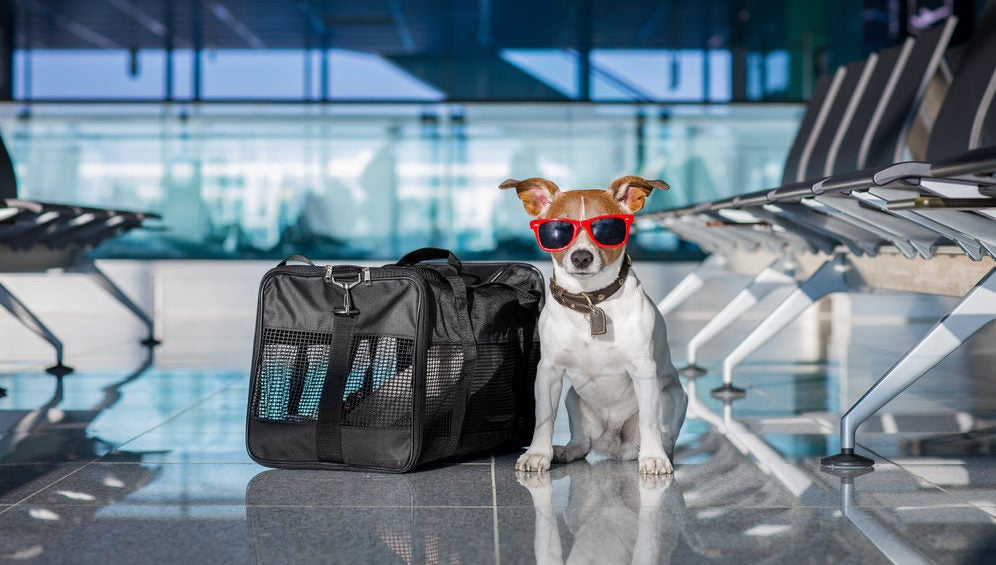
When looking for the perfect pet carrier, there a few things you should consider.
Amtrak and some other train operators have weight restrictions that are usually the weight of your pet and the carrier combined. If your pet is on the heavier side, you’ll need to find a lightweight, soft carrier that is also robust enough to accommodate the weight of your pet.
Choosing the correct size of carrier for your pet is an important decision. Too big and your pet could move around, making it difficult to balance and carry. Too small and it would be uncomfortable for your pet, restricting space to stand up or stretch. As a rule of thumb, your pet carrier should be around 1.5 times the size of your pet.
Traveling on a train can be hot at times, so it’s advisable to choose a pet carrier that has mesh sides to allow airflow to keep your faithful friend cool.
Owners have the choice between hard and soft shell pet carriers, and the decision will depend entirely on your circumstances and preference. Hardshell carriers are more robust, provide more protection, and are easier to keep clean; whereas, soft carriers can offer more comfort, are lighter, and easier to store.
Hot Tip: Make sure you’re earning points for your pet purchases. Check out our guide to the best credit cards to use for pet expenses.
As you can see from the table above, most train operators stipulate that only “small pets” may be carried on board, so train travel is unfortunately not yet widely accessible to larger animals.
However, some passengers do try to bend the rules of certain operators such as the New York Subway that states “No person may bring any animal on or into any conveyance or facility unless enclosed in a container and carried in a manner which would not annoy other passengers.”
Over the years, there’s been controversy over the number of pet-related deaths during transit in both the cabin and cargo hold of an airplane; in fact, we did a whole study on the best airlines for pets for that exact reason. Traveling on a train with your pet can be a more relaxed and safer mode of transport for your pet.
Some pets can struggle with the pressure from an airplane’s increased altitude, causing issues with breathing. In fact, this has caused some airlines to prohibit the hold transportation of snub-nosed breeds, such as pugs and bulldogs.
If you’ve got a small pet that you would like to travel with you, train travel is the ideal mode of transport, being relatively cheap and safe. Looking for more information on traveling with your 4-legged friend? Explore our ultimate guide on traveling with your pet .
Frequently Asked Questions
Are pets allowed on trains.
In the United States, pets are allowed on some trains and it is becoming increasingly common that pets are permitted. Amtrak allows pets up to 20 pounds on many routes (with restrictions on certain routes). The table above lists details of pet policies for train operators within each state.
How do you travel with a cat on a train?
To take your cat on a train, they should be inside a suitable pet carrier that is well ventilated and leak-free. This should be placed under your seat or kept on your lap. Ensure you have plenty of water and are able to stop for relief breaks if the journey is long.
How do you travel with a dog on a train?
When traveling with a dog on a train, they should be inside a suitable pet carrier that is well ventilated and leak-free. This should be placed under your seat or kept on your lap. Ensure you have plenty of water and are able to stop for relief breaks if the journey is long. Your dog should not cause any disruption to other passengers, otherwise you may be asked to disembark.
Can dogs travel on trains in the U.S.?
Some U.S. train operators, such as Amtrak, allow pets on board. Dogs up to 20 pounds are permitted to ride on many routes (some restricted routes apply) providing they remain within an enclosed pet carrier for the duration of the journey.
Was this page helpful?
About Amar Hussain
Amar is an avid traveler and tester of products. He has spent the last 13 years traveling all 7 continents and has put the products to the test on each of them. He has contributed to publications including Forbes, the Huffington Post, and more.
INSIDERS ONLY: UP PULSE ™

Get the latest travel tips, crucial news, flight & hotel deal alerts...
Plus — expert strategies to maximize your points & miles by joining our (free) newsletter.
We respect your privacy . This site is protected by reCAPTCHA. Google's privacy policy and terms of service apply.
Related Posts
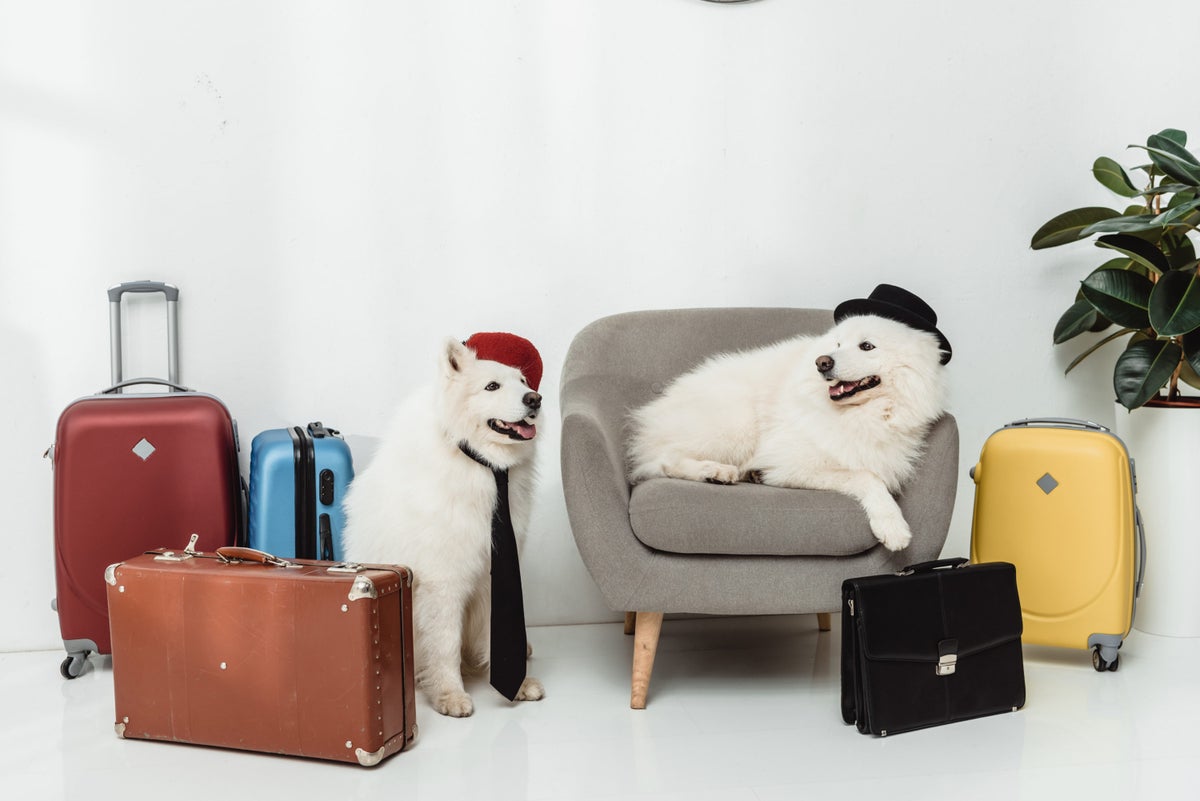
UP's Bonus Valuation
This bonus value is an estimated valuation calculated by UP after analyzing redemption options, transfer partners, award availability and how much UP would pay to buy these points.
Leading the Way in Animal Transportation
Service to and from more than 150 airports.

- Online Reservations
- MO/KAN/IA Pickup Reservations
- Reservations FAQ
- Shipping FAQ
- Create an Account
- Shipping Estimate
- Requirements
- Preferred Customer Shipping Specials
- Select City Shipping Specials
- Kennels & Supplies
Create a Pet Air Shipping Account
Before we ship your pet, you must have a Pet Air Shipping Account
How to Make Reservations for your Pet
Book reservations online, by phone or by fax.
Prepare Your Pets for Travel
Shipping requirements and helpful hints.
Pet Shipping and Pet Transportation Services with Pet Air.
Welcome flypets.com.
At Pet Air we strive to provide affordable, professional animal transportation in the most convenient way for our customer and their pets.
Fraud Warning
We do not require Western Union or Money Gram payments. If someone or company is asking you to Western Union or Money Gram them money overseas beware, you may be being scammed.
- Shipping Pets By Air since 1976
- Service From Over 150 Airports
- Computerized Airline Planning
- Fast Friendly Service
- Competitive Rates
- Year Round Shipping
- Red Eye Flights Available To Many Cities
- Pickup And Delivery of your Pet Available
- Corporate Relocation Services
- Toll Free Reservation Line
- Preferred Customer Discounts
- Military Discounts
- Privacy Policy
- Customer Service
- Airports Served
- Price Estimate
- Shipping Information
- Shipping Requirements
- Create a Shipping Account
- Reservation Information
- Book Online Reservations
- Book Pickup Reservations
Watch CBS News
Flying with pets? Here's what to know.
By Anne Marie Lee
Edited By Alain Sherter
Updated on: April 6, 2024 / 10:08 AM EDT / CBS News
Thinking of taking your dog or cat with you the next time you fly? For a growing percentage of the 90.5 million pet owners in the U.S., the answer is yes. But while the notion of boarding a plane with your pet may seem simple, the rules and restrictions around traveling with an animal can be confusing.
Eight major U.S. airlines allow pets to fly in-cabin as carry-ons. But flying with your pet takes research and planning, as pet policies vary from airline to airline, are steeped in restrictions, and are limited to specific countries and cities. You'll also have to pay an extra fee for your pet ranging from $95 to $200, depending on the airline and where you're flying. And restrictions often change.
For example, American Airlines recently revised its policies so passengers flying with pets may also bring one full-size carry-on or personal item. But the carrier prohibits carry-on pets on transatlantic and transpacific flights. Here's what you need to know when considering taking your fur baby with you on a plane.
Cargo, check-in or carry-on?
Most airlines offer three options for transporting animals: cargo, check-in or carry-on. But if your pet is larger than a bread box, your options are limited to the cargo or baggage check-in options, with very few exceptions.
Given that large canine breeds such as Labrador Retrievers, German Shepherds and Golden Retrievers are among the most popular dogs in the country, the size restriction for in-cabin pet travel can be a major frustration for those who would rather not fly at all if that means putting their pet in cargo.
A 2023 Forbes Adviser survey of 10,000 U.S. dog owners found that 33% of respondents fly with their pets, while 37% listed not being able to bring their dog on a plane as their biggest annoyance. (You can learn more about the differences between cargo, check-in and carry-on options here , including warnings about the dangers involved when pets travel in the cargo hold.)
Carry-on pets
Even for pet owners whose animals are small enough to fly as a carry-on, traveling is no breeze.
"When I fly with him I have to go to the desk," Margaret Rauch, 44, told CBS MoneyWatch, referring to her 15-pound poodle mix, Soda. The New York City resident has taken Soda on dozens of flights to St. Croix in the U.S. Virgin Islands, where Soda, now 4, was being fostered by a friend after being found as a stray puppy in 2021.
In addition to calling the airline in advance to register her dog for a flight, Rauch has to check in at the counter whenever she's traveling with Soda, so the airline agent can confirm her dog and pet carrier conform to the in-cabin pet requirements and that the flight hasn't already met its pet maximum.
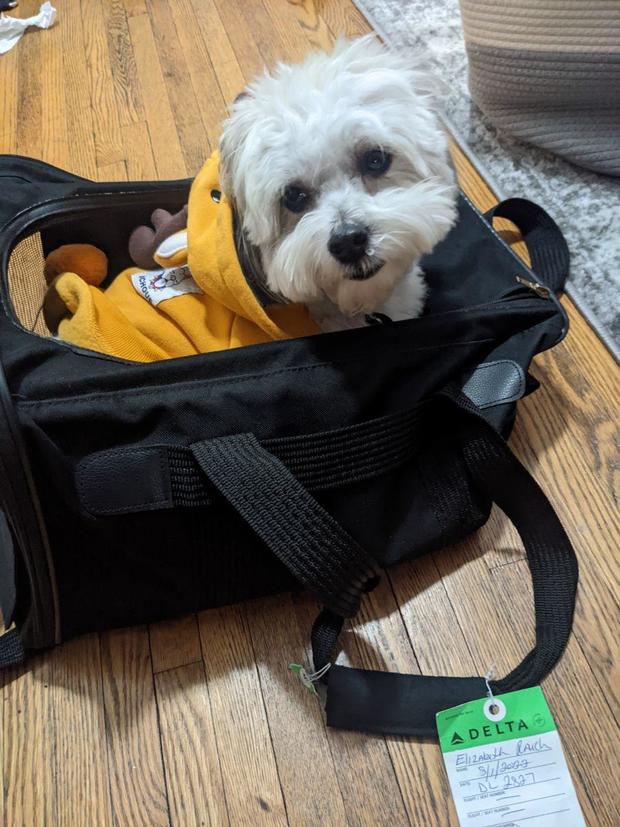
Rauch, who said she would never consider putting Soda in cargo, applauded American Airlines' new policy, while noting that in her experience the one carry-on rule was rarely enforced.
"I feel the price is already high for what I get. Even with AA's rule change, I lose the underseat space," she said. "My dog creates no extra work for anyone."
Despite the added preparation, paperwork and hassle involved in flying with Soda — not to mention the unfriendly looks she occasionally detects from fellow passengers at the sight of her pet carrier — Rauch said, "It's absolutely worth it."
Asked how the experience could be improved, she pointed to early boarding for pet owners as something that would help.
"If you can get in early, get a seat and settle down, that is an accommodation I don't expect to see anytime soon but I think it makes sense," Rauch said.
Safety and comfort
For the many Americans who see their pets practically as family members, one of the most challenging aspects of flying is ensuring their animal's comfort and safety.
"The increasing humanization of pets, which involves treating them as part of the family rather than as mere animals, has increased the demand for pet travel services that are of high quality and can be customized to meet the specific needs of each pet," LinkedIn reported in December.
Among other tips, the U.S. Department of Transportation and animal experts recommend that you not feed your pet four to six hours before a flight and limit their water intake. Others also suggest keeping bottled water on hand at all times. Additionally, most airlines require certain vaccination and vet certification that your pet is healthy enough to fly. Individual countries also have their own requirements for pets to enter.
Not surprisingly, some airlines do better than others at handling pets. One of the best-rated carriers for pet travel is Alaska Airlines, which has repeatedly topped rankings, such as NerdWallet's Most pet-friendly airlines of 2024. In recent years, the airline also has maintained one of the industry's lowest incident ratings, according to Veterinarians.org. United Airlines and Delta are among the airlines with the highest incident rates, according to the pet information website.
On Rauch's first plane trip with Soda traveling home to New York, a layover in Miami led to the flight sitting on the tarmac for two hours. Calming treats are something that helps keeps her dog relaxed on flights. She also withholds Soda's food and limits his water intake up to five hours before a flight, which is also helpful given that he doesn't like using pet relief areas, which she said generally smell of urine and can be overwhelming for dogs. Flights between New York City and St. Croix are generally under six hours.
"I'm not sure how I'd handle a flight to Singapore," Rauch said.
Here's a rundown of U.S. airlines' pet travel policies, along with fees and and restrictions:
Alaska Airlines
Pet fee: $100
Pets allowed: Dogs and cats are the only pets allowed in-cabin on international trips and flights to Hawaii. Domesticated rabbits and small household birds are allowed as carry-on on domestic flights.
Destinations: Domestic and international, with additional requirements and documentation required for pets traveling to Hawaii or internationally .
See Alaska's full pet policy here .
American Airlines
Pet fee: $150
Pets allowed: Dogs, cats
Destinations:
- Within the 48 contiguous U.S.
- The U.S. and Canada*
- Puerto Rico
*Additional special restrictions may apply. See American's full pet policy here .
Pet fee: $75-$200, depending on destination
Pets allowed: Dogs, cats, household birds
Pet friendly destinations:
- U.S., Virgin Islands and Puerto Rico
- International destinations with the exception of Australia, U.K., Republic of Ireland and others .
Pets are not permitted on flights to Hawaii. See Delta's full pet policy here .
Frontier Airlines
Pet fee: $99
Pets allowed: Dogs, cats, rabbits, guinea pigs, hamsters and household birds
Destinations: Domestic flights and international flights to and from the Dominican Republic and Mexico.
See Frontier's full pet policy here .
Pet fee: $125
Destinations: Domestic and international. See exceptions for international flights here .
See JetBlue's full pet policy here .
Southwest Airlines
Pet fee: $125 per pet carrier on the U.S. mainland; $35 per pet carrier between Hawaiian Islands
Destinations: Domestic U.S. flights only. For travel to Puerto Rico, specific requirements may apply . For Hawaii travel, see rules and regulations here.
See Southwest's full pet policy here .
Spirit Airlines
Pets allowed: Dogs, cats, birds (with the exception of flights to or from Puerto Rico and the U.S. Virgin Islands) or rabbits (with the exception of flights to or from Puerto Rico and the U.S. Virgin Islands).
Destinations: Domestic flights including Puerto Rico and St. Thomas, U.S. Virgin Islands
See Spirit's full pet policy here .
United Airlines
Destinations: Domestic and international flights with a list of exceptions. United does not allow pets to fly to, from or through certain states and countries. View the list here .
See United's full pet policy here .
More from CBS News

Why you should consider debt relief this April
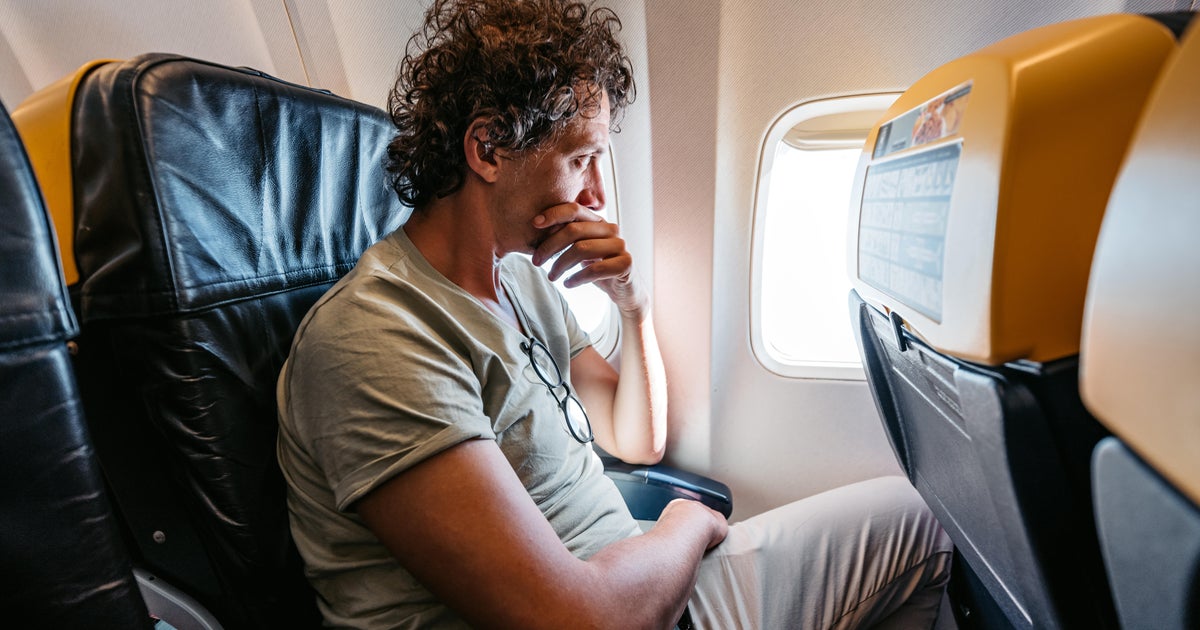
Terrified of flying? British Airways says it can help.

How to use home equity to purchase a second home

Flight forced to turn around after passenger tried to enter cockpit
Expedia Rewards is now One Key™
Find pet-friendly hotels in moscow.
Most hotels are fully refundable. Because flexibility matters.
Save 10% or more on over 100,000 hotels worldwide as a One Key member.
Search over 2.9 million properties and 550 airlines worldwide.
Check availability on Moscow Pet-friendly Hotels
Pick from Moscow Pet-friendly Hotels and compare room rates, reviews, and availability. Most hotels are fully refundable.
Moscow pet-friendly hotels information, frequently asked questions.
- Explore a world of travel with Expedia
Top neighborhoods for Pet-friendly Hotels
- Pet-friendly Hotels in Moscow City Centre
- Pet-friendly Hotels in Presnensky
More Hotel Options in Moscow
- Boutique Hotels (19)
- Business Hotels (355)
- Cheap Hotels (69)
- Family Hotels (246)
- Historic Hotels (314)
- Honeymoon Resorts & Hotels (55)
- Hotel Wedding Venues (63)
- Hotel with a Concierge (133)
- Hotels & Resorts for Couples (67)
- Hotels with Air Conditioning (347)
- Hotels with Balconies (23)
- Hotels with Bars (215)
- Hotels with Childcare (31)
- Hotels with Connecting Rooms (70)
- Hotels with Free Airport Shuttle (20)
- Hotels with Free Breakfast (99)
- Hotels with Free Parking (180)
- Hotels with Free Wifi (415)
- Hotels with Laundry Facilities (319)
- Hotels with Restaurants (404)
- Hotels with Room Service (249)
- Hotels with a Gym (117)
- Hotels with a Pool (69)
- Hotels with a View (62)
- Hotels with an Indoor Pool (61)
- Hotels with an Outdoor Pool (34)
- Hotels with smoking rooms (99)
- Luxury Hotels (53)
- Non-Smoking Hotels (324)
- Resorts & Hotels with Spas (139)
- Romantic Hotels (21)
- Ski Hotels (174)
Hotels near popular Moscow Attractions
- Hotels near Red Square
- Hotels near Moscow Kremlin
- Hotels near Crocus City Hall
- Hotels near Bolshoi Theatre
- Hotels near St. Basil's Cathedral
- Hotels near Crocus Expo Center
- Hotels near Moscow City
- Hotels near Lenin's Mausoleum
- Hotels near Arbat Street
- Hotels near Armoury Chamber
Top 20 destinations for Pet-friendly Hotels
- Pet Friendly Hotels in Las Vegas
- Pet Friendly Hotels in Virginia Beach
- Pet Friendly Hotels in Savannah
- Pet Friendly Hotels in Pigeon Forge
- Pet Friendly Hotels in Asheville
- Pet Friendly Hotels in Gatlinburg
- Pet Friendly Hotels in Charleston
- Pet Friendly Hotels in Ocean City
- Pet Friendly Hotels in Myrtle Beach
- Pet Friendly Hotels in Atlanta
- Pet Friendly Hotels in Cape May
- Pet Friendly Hotels in Reno
- Pet Friendly Hotels in Wilmington
- Pet Friendly Hotels in Charlotte
- Pet Friendly Hotels in Niagara Falls
- Pet Friendly Hotels in Duluth
- Pet Friendly Hotels in Los Angeles
- Pet Friendly Hotels in Bend
- Pet Friendly Hotels in Jacksonville
- Pet Friendly Hotels in Wildwood
Expedia's Latest Trends
Do Dogs Need Eclipse Glasses? What Experts Have to Say About Pet Safety
Although they don't need glasses, you still might want to keep pets inside on April 8.
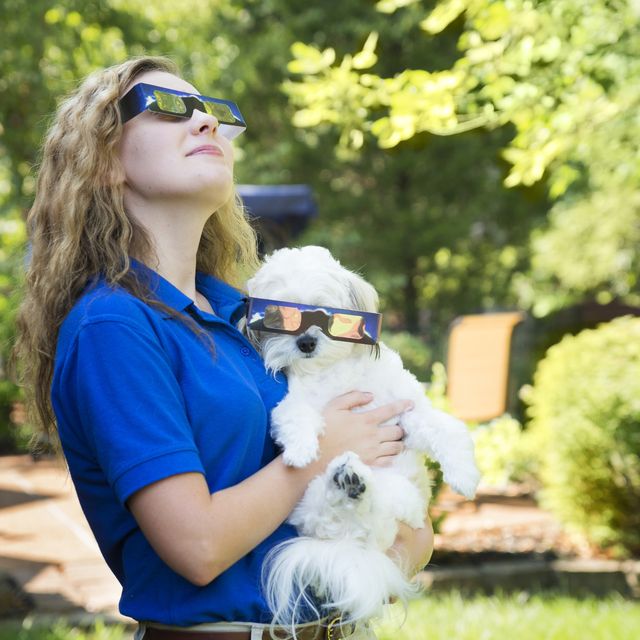
Country Living editors select each product featured. If you buy from a link, we may earn a commission. Why Trust Us?
Will dogs and cats act differently during the eclipse?
Is the eclipse safe for pets.
The moment we've been waiting for is finally here!
The 2024 total solar eclipse will take place on April 8, and if you're lucky enough to be in its path, it's cause for serious celebration (after all, this won't happen again until 2044!). By now, you've hopefully made your plans and bought your eclipse glasses so you can safely view the celestial event. But in all the excitement, pet owners are left wondering: What about our four-legged friends? Do dogs and cats need solar eclipse glasses? Should they be kept inside on April 8? Dr. Rebecca Greenstein , Veterinary Medical Advisor for Rover, helped us clear up any questions pet owners may have.
Does my dog need eclipse glasses?
To put it simply, no. While humans will spend April 8 gazing at the sky, our dogs and cats will not. According to Dr. Greenstein, "Pets instinctively avoid looking at the sun, so it’s likely not necessary to buy them special protective glasses or keep them inside to avoid the sunlight." She continues, "Do not force nor encourage your pet to look at the eclipse, as staring at the sun can cause ocular damage in pets just like it does in people."
Helioclipse Solar Eclipse Glasses AAS Approved

It's possible! While Dr. Greenstein says that animals won't be able to anticipate that an eclipse is going to happen, they may react to the sudden darkness. She explains, "You may notice your pets exhibiting behavior typically seen closer to bedtime or after dark. For example, they may go lie in their bed or wherever they would usually spend time in the evening." The eclipse only lasts about 4 minutes in the path of totality, so they should resume their usual behavior afterward.

If your pet is sensitive to change or anxious, try keeping to your regular routine on April 8. Dr. Greenstein recommends keeping animals at home, rather than taking them to a crowded viewing party, and keep them comfortable and distracted with their favorite treats and toys.
Dr. Greenstein says that, while there are not significant health risks for pets related to the eclipse, there are some things to keep in mind. She explains, "All the commotion associated with viewing parties can be anxiety-inducing for some pets, so it might be safest to leave them at home if you’re planning to view the natural phenomenon." If you decide to take your pet to an event, take along food and water and keep them on a leash at all times. Dr. Greenstein explains, "Pets that are more easily spooked may become anxious or stressed by an excited crowd, lots of noise, or the sudden unexpected darkness brought on by the eclipse itself."
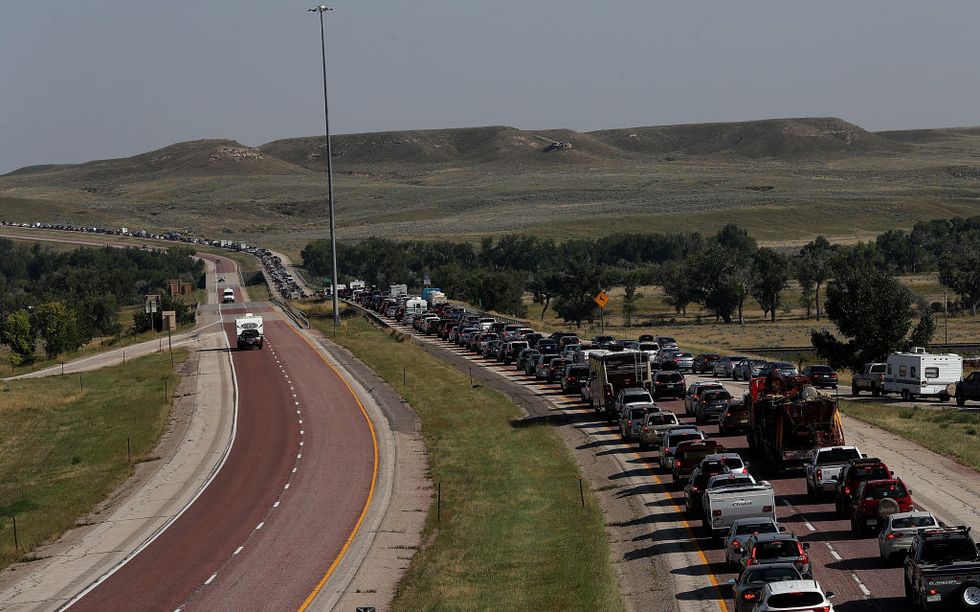
Another factor for pet parents to keep in mind is travel. In 2017, 5 million people in the U.S. traveled to see the eclipse, and the Federal Highway Administration says "major traffic issues" are possible. If you're traveling with a pet, prepare ahead in case your trip takes longer than expected. Dr. Greenstein says, "Try to get all of your groceries and necessities a few days prior. If you do have to go somewhere with your dog, ensure you're prepared with water, treats, a leash and anything else your pet may need in the event of a long car trip."
Katie Bowlby is Digital Director at Country Living, where she covers gift guides, product reviews, crafts, and TV shows like Yellowstone. She’s currently stitching up a cross-stitch pattern for the magazine’s next issue
.css-1shyvki:before{background-repeat:no-repeat;-webkit-background-size:contain;background-size:contain;content:'';height:0.819rem;margin-bottom:0;margin-right:-0.9375rem;width:3.125rem;}.loaded .css-1shyvki:before{background-image:url('/_assets/design-tokens/countryliving/static/images/arrow.svg');}@media(max-width: 48rem){.css-1shyvki:before{display:none;}}@media(min-width: 40.625rem){.css-1shyvki:before{display:inline-block;}} Pets .css-unxkmx:before{background-repeat:no-repeat;-webkit-background-size:contain;background-size:contain;content:'';height:0.819rem;margin:0.7rem auto 0.9375rem;width:3.125rem;}.loaded .css-unxkmx:before{background-image:url('/_assets/design-tokens/countryliving/static/images/arrow.svg');}@media(max-width: 48rem){.css-unxkmx:before{display:block;}}@media(min-width: 40.625rem){.css-unxkmx:before{display:none;}}
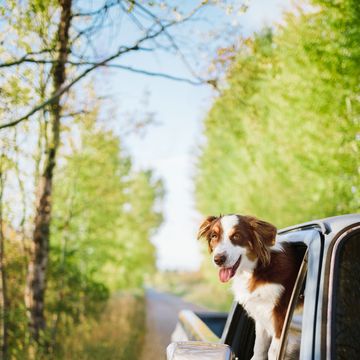
Entertain Your Flock with These Fun Chicken Toys

The Price of Eggs
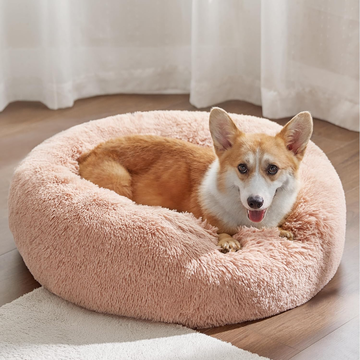
Spoil Your Pet With Amazon Big Spring Sale Deals
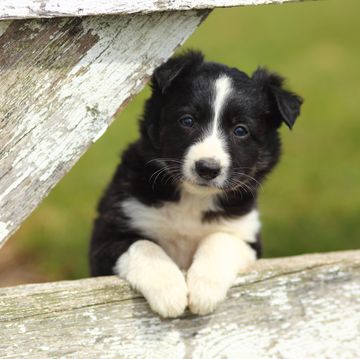
55 Absolutely Adorable Baby Animal Photos

My Cats Love This Pet Bed Cave
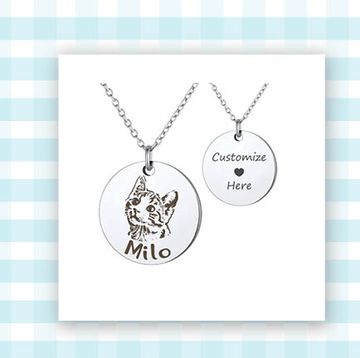
Heartfelt Pet Memorial Gifts to Give Loved Ones

Purina Responds to Social Media 'Rumors'

Short Cat Captions for Instagram Purr-fection
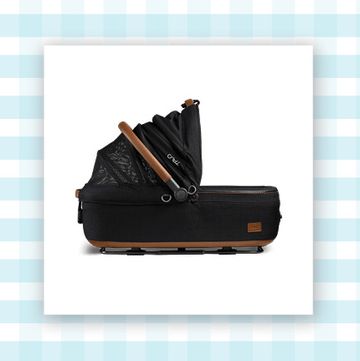
Tavo Sets the Bar for Pet Vehicle Safety
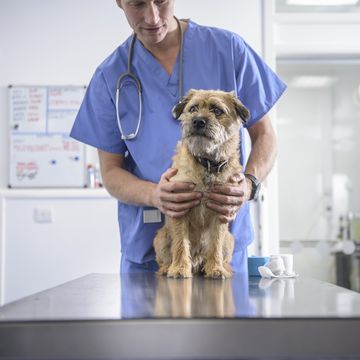
What Are the Symptoms of the New Dog Illness?

The Best Girl Dog Names

COMMENTS
Take breaks to keep you and your dog hydrated, fed, alert, relaxed and comfortable. Truck/travel are great pit stops usually with shade and good amenities. Use shade, climate control, Tesla "dog mode", etc to keep your dog safe when you have to go inside without them (be very careful!) Check in to your accommodation.
For canned food, don't forget the can opener! All of your pets medications, vitamins, supplements, etc. And pack enough for your trip, plus a few extra days in case you're delayed. (Also, remember the vaccination certificate and medical records mentioned above.) A travel litter box and litter for your cat.
Vaccinated dogs are safe for car trips. Make sure your Vet is on-board while planning a trip. For emergency purposes, make sure your luggage can be unpacked easily; any cross country trips with dogcan be a hassle so luggage should be kept at arm's length. Surprises are common in any cross country road trips with dog.
READ MORE ⇒ Tips for a Cross-Country Road Trip with Pets. Indiana - Indiana Dunes National Park. ... GoPetFriendly is the nation's fastest-growing pet friendly travel planning platform, with more than 1 million trips booked every year. Their unique content provides loads of inspiration, and their best-in-class database provides all the ...
A key aspect of planning a cross-country road trip with your dog is finding pet-friendly accommodations. This may include hotels, motels, campsites, or vacation rentals. Utilize resources like Go Pet Friendly and petswelcome to locate suitable lodging along your route. When booking accommodations, consider the following factors to ensure your ...
Get a pre-trip health check for your pup. Before taking a dog on a road trip, visit the vet for a pup health check. Your vet will be able to confirm that your pooch is in good shape to travel, and offer advice on any health risks (such as ticks) you may encounter along the way. Now is also a good time to consider taking out pet insurance to ...
In early June, I decided to go on a solo cross-country road trip from Florida to California with my dog, Kuma. Driving from Tampa to Los Angeles is a total of 2,533 miles and would take 37 hours to drive. Since I was traveling solo on a long road trip with a dog, I had to do some careful and detailed planning with this road trip itinerary.
Blankets and towels - Bring some scents from home with you and pack a few blankets and towels into the car for your dog to lay on. Pet first-aid kit - Include bandages, antiseptic wipes, tweezers, and any necessary medications prescribed by your vet. Waste bags - A good owner knows to clean up after their dogs.
1. Dog Crate. Even if you don't intend to crate your dog in the car, some hotels, even those that offer pet-friendly travel, require you to have a crate. 2. Dog Bed. Preferably this bed will be one from home that your dog is already familiar with to offer comfort on the road.
Prioritize rest for you and your dogs! This includes sleep, relaxation, and decompression. Stop as often as you want, especially at points of interest, overlooks, etc. Road trip travel is as much about the journey as it is the destination. Always add 1-2 hours to whatever Google Map says your drive time will be.
READ MORE ⇒ Tips for Traveling Cross-Country with Pets. 2. Lazy Dog Restaurant & Bar - Various Locations. In addition to having dog-friendly outdoor seating, Lazy Dog goes offers dogs their own menu! Toby skipped his usual kibble for the evening so he could try their grilled chicken with peas and carrots over brown rice.
Here are some tips on driving cross-country alone with a dog. 1. Acclimate Your Dog. If this is your first time taking your dog on a cross-country road trip, make sure that they are okay with car rides first. Start by taking short car trips and gradually work up to longer ones.
In this article, I take you through our journey, and then lay out my go to tips to make your next cross country drive with your dog a stress-free success. If you're in a rush here are my 7 essential tips to keep in mind when going on a road trip with your dog: Plan your trip to control every detail that you can. Overpack.
A solo female traveler traveling cross country with a dog shares cross-country travel tips, hacks, and cross-country road trip essentials. About; Blog; Templates; Travel Essentials; Contact; Taking life on the road. If you want to know cross country travel tips, hacks, or stay tuned to my adventure on the road with my dog please subscribe for ...
Traveling by car is generally the best way to travel with pets, because it puts them under the least amount of stress. For long, cross-country trips, consider requesting a sedative from your veterinarian. Although many dogs are used to riding in the car, cats in particular may become stressed, and a prescribed sedative is a useful preventive ...
Here is a brief expo on what you should include in your plans: 1. Visit the Vet before your Trip. A trip to the vet should precede every long-distance travel with your pets. There are a lot of reasons why you will need this. First, it's essential to get your dog in perfect health and form before traveling.
11 Things I Learned Driving Cross Country with My Pets. Two years ago this July, I set off on a cross-country road trip from Virginia to Arizona with my two dogs and car full of stuff. I spent four weeks on the road and logged more than 2,000 miles. As you might imagine, I learned plenty after taking a trip that long with my beloved long-haired ...
Those moving cross country with pets should avoid feeding them solid food several hours before the travel begins. Cats, in particular, are prone to vomiting and esophageal problems. Dogs, when anxious and/or experiencing motion sickness, also tend to have stomach issues while traveling.
Fill plastic bags with portions of litter to fill boxes as needed. If possible, toss the box once your cat is done with his bathroom break — otherwise, store it in an airtight bag and dispose of it once you reach your destination. And consider introducing your cat to the disposable litterbox before you start on your cross-country journey ...
Even though ticks can be found throughout the year in the state they are usually more common to spot between March and October. The most common species of ticks found in Minnesota are the black ...
I have a 15 and 30 foot leash. Sometimes I hold the looped end, but often I let Basa drag it behind her. Basa is also a secret weapon, my solace. She forces me to stretch my legs and helps me find ...
Tip 2: Research your route. Tip 3: Practice car trips beforehand. Tip 4: Blow off steam before you travel. Tip 5: Try positive reinforcement. Tip 6: Create a calming space in the car. Robin Skillings, Chief Marketing Officer at Ruffwear, told Country Living: "Dogs have a natural inclination for exploration and adventure, making road trips with ...
Only 1 pet per passenger is permitted, and if transporting on the passenger's lap or the floor, then the carrier must not exceed 17 x 10 x 10 inches. If transported in the coach luggage tower then the carrier must not exceed 28 x 20.5 x 21.5 inches. Miami Metromover. Pets are permitted in a secure, enclosed carrier.
Find U.S. State and Territory Requirements. APHIS doesn't regulate the interstate movement of pets. Domestic movement requirements are set by the receiving State or Territory. Contact the State animal health official in your destination State or Territory if you have questions or need clarification on any of the requirements. When you travel ...
The date of departure from the United States. Whether the pet will be traveling alone, as cargo, or with a person in the cabin of the plane. Note: If you're traveling with a pet bird or exotic animal, you may need to work with additional agencies, such as the U.S. Fish and Wildlife Service (1.41 MB) and Centers for Disease Control and Prevention.
Text PETAIR to 22828 to join our email list. or. Join Our Email Mailing List. Pet Shipping and Animal Transportation. Since 1976. Pet Air Inc provides animal transportation services. We want your pets to be comfortable as they travel. Visit us online today to book your trip.
If you have questions about CDC requirements, contact CDC-INFO or call them at 404-718-3660. This page will guide you through the requirements for bringing privately owned, pet dogs into the United States from another country, including U.S. returning dogs. If you're bringing dogs into the United States for commercial sale or adoption ...
Spirit Airlines. Pet fee: $125. Pets allowed: Dogs, cats, birds (with the exception of flights to or from Puerto Rico and the U.S. Virgin Islands) or rabbits (with the exception of flights to or ...
Find pet-friendly hotels in Moscow. Most hotels are fully refundable. Because flexibility matters. Save 10% or more on over 100,000 hotels worldwide as a One Key member. Search over 2.9 million properties and 550 airlines worldwide.
If you decide to take your pet to an event, take along food and water and keep them on a leash at all times. Dr. Greenstein explains, "Pets that are more easily spooked may become anxious or stressed by an excited crowd, lots of noise, or the sudden unexpected darkness brought on by the eclipse itself." Justin Sullivan.